Baroque History #2
1/77
There's no tags or description
Looks like no tags are added yet.
Name | Mastery | Learn | Test | Matching | Spaced |
|---|
No study sessions yet.
78 Terms
Naturalism
Hyper-accurate observational depiction of nature and the human form
Realism
Depicting life without idealization, often about everyday life or real life issues
Vasari’s Story of Leonardo da Vinci’s Medusa shield
A story about how Leonardo’s father took an ordinary wooden shield from a peasant and gave it to him. Leonardo studied animals like snakes, bats, and lizards all to make a grotesque Medusa head painting on it. There is no evidence that Leonardo ever did this, making it a tale
Chiaroscuro
Dramatic use of light and shadow to create depth
Decorum
The appropriateness of style, content, and execution in a work of art
Knights of Malta (The Order of Knights Hospitaller of St. John of Jerusalem)
A Catholic military order centered around humanitarian work. Caravaggio sought knighthood in Malta to rebuild his career after running from Rome due to a murder conviction
Apocrypha
Biblical writings not forming part of the accepted canon of scripture
Judith and Holofernes story
Judith, a brave Jewish widow, tricked the Assyrian general Holofernes by seducing him and getting him drunk. When he passed out, she beheaded him with his own sword and brought his head back to her city. Her people were inspired, and the enemy army fled in fear, saving Bethulia
Susanna and the Elders story
Susanna, a virtuous woman, was falsely accused of adultery by two corrupt elders after she rejected their advances. She was sentenced to death, but the young prophet Daniel exposed their lies by questioning them separately. Proven innocent, Susanna was saved, and the elders were punished
Carvaggisti
Artists of the 17th century who were influenced by or worked in the style of Caravaggio
The story of the Denial of Peter and Esau Selling his Birthright
Peter denied knowing Jesus three times out of fear, but when the rooster crowed, he remembered Jesus’ words and wept in regret. This showed human weakness but also the possibility of repentance and forgiveness. Similarly, Esau carelessly traded his birthright to Jacob for a bowl of stew, valuing temporary comfort over his future blessing. Both stories highlight the consequences of short-sighted choices but also the importance of redemption and responsibility
Utrecht Carvaggisti
A group of Dutch painters from Utrecht in the early 17th century who were heavily influenced by the dramatic style of Caravaggio
Absorption
The artwork doesn’t acknowledge the outside world, aka the viewer
Tudor dynasty (Henry VIII → Edward VI → Mary I → Elizabeth I)
The Tudor dynasty ruled England from 1485 to 1603, with four key monarchs shaping its history:
Henry VIII (1509–1547): Famous for his six wives and breaking away from the Catholic Church to form the Church of England.
Edward VI (1547–1553): Henry’s sickly son, a Protestant king who ruled briefly before dying young.
Mary I (1553–1558): A Catholic queen who tried to restore Catholicism and persecuted Protestants, earning the nickname “Bloody Mary.”
Elizabeth I (1558–1603): A powerful queen who brough Church of England again, Protestant for good, defeated the Spanish Armada, and led the country into its Golden Age
Miniature portraits
Small scale detailed portraits often for jewelry or cabinet paintings
Anamorphosis
A distorted image that becomes recognizable only when viewed from a specific angle or device
Spanish Armada of 1588
In 1588, Spain (King Phillip II) sent a massive fleet, the Spanish Armada, to invade England and overthrow Queen Elizabeth I to restore Catholicism. However, the English navy, with faster ships and better tactics, defeated the Armada. This victory made England a major naval power and weakened Spain’s dominance in Europe
Polyptych
An artwork with four or more panels joined by hinges or folds
Oil sketch
Oil painted on a small canvas to work out ideas and for patron approval
Equestrian portrait
Portrait of a figure on horseback, usually of high status
Ruben’s categories of artistic production
works entirely by his own hand
collaborations
with studio assistance
works by assistants in Rubensian style
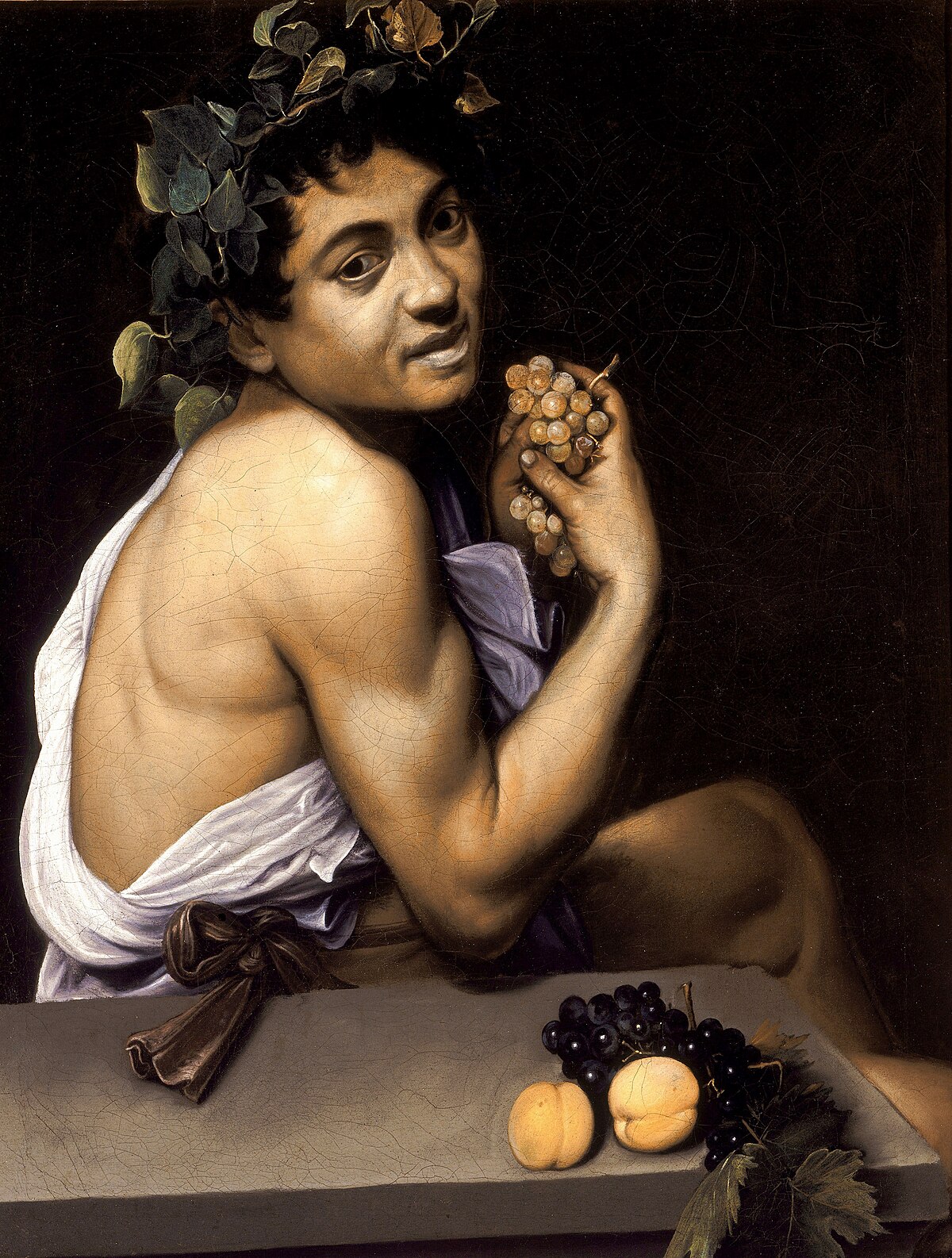
Self-Portrait as Sick Bacchus, 1593-1594
Caravaggio
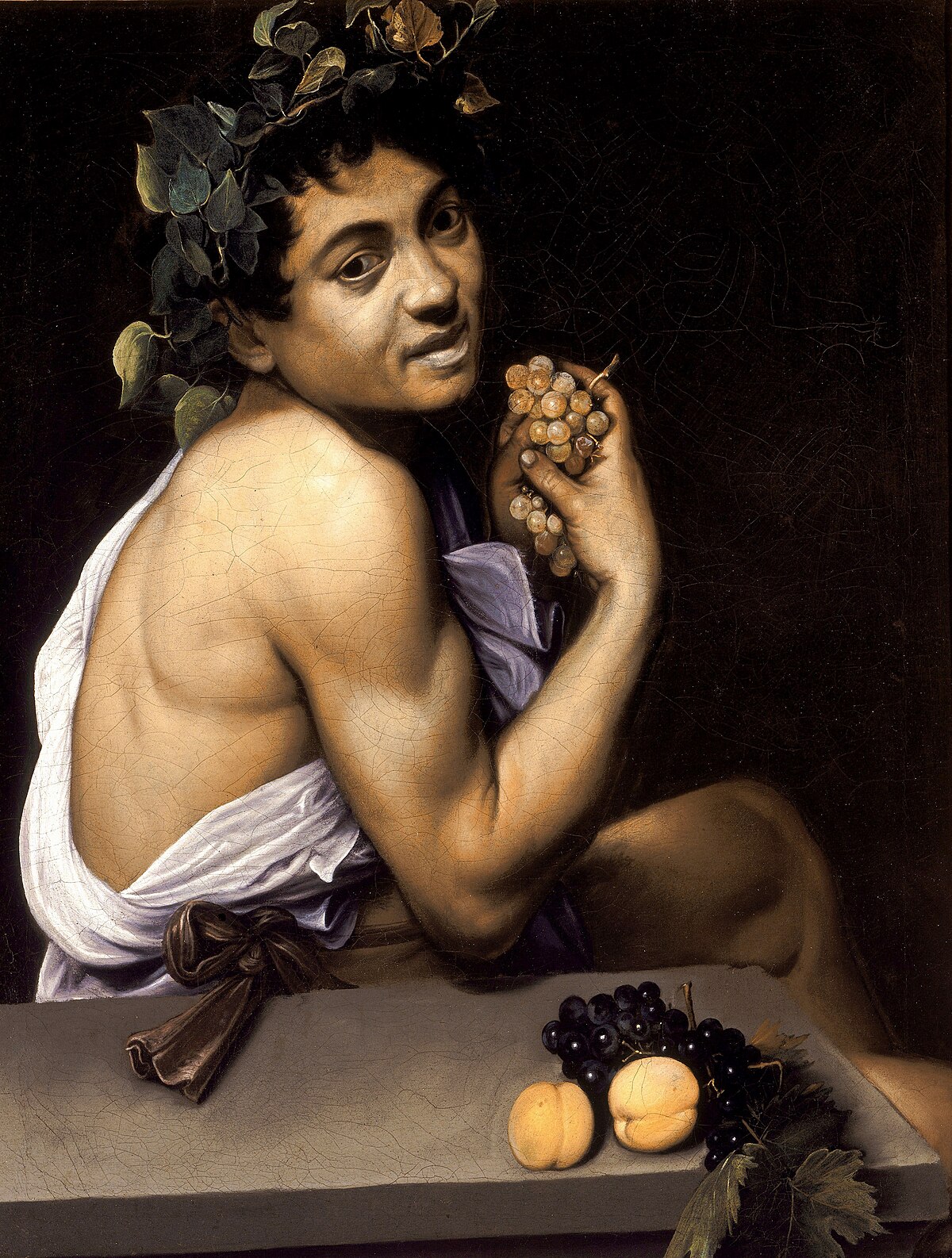
Caravaggio, Self-Portrait as Sick Bacchus, 1593-1594
Caravaggio portrays himself as Bacchus, the Roman god of wine, but looks pale, sickly, and tired. The painting is thought to reflect Caravaggio’s illness and struggles during his early years in Rome. He uses realism and dramatic lighting to create a raw, humanized image of the god
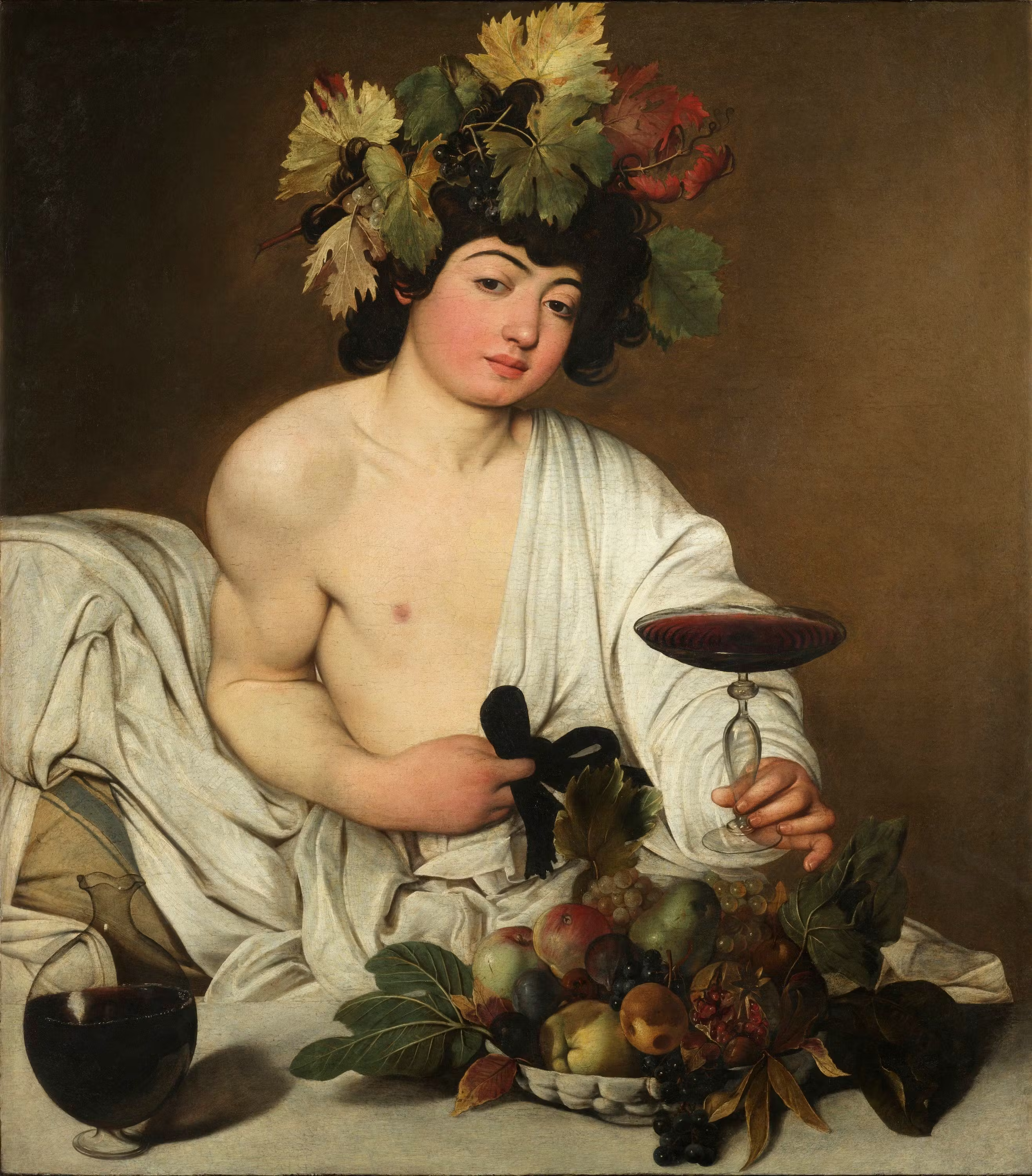
Bacchus, 1597-1598
Caravaggio
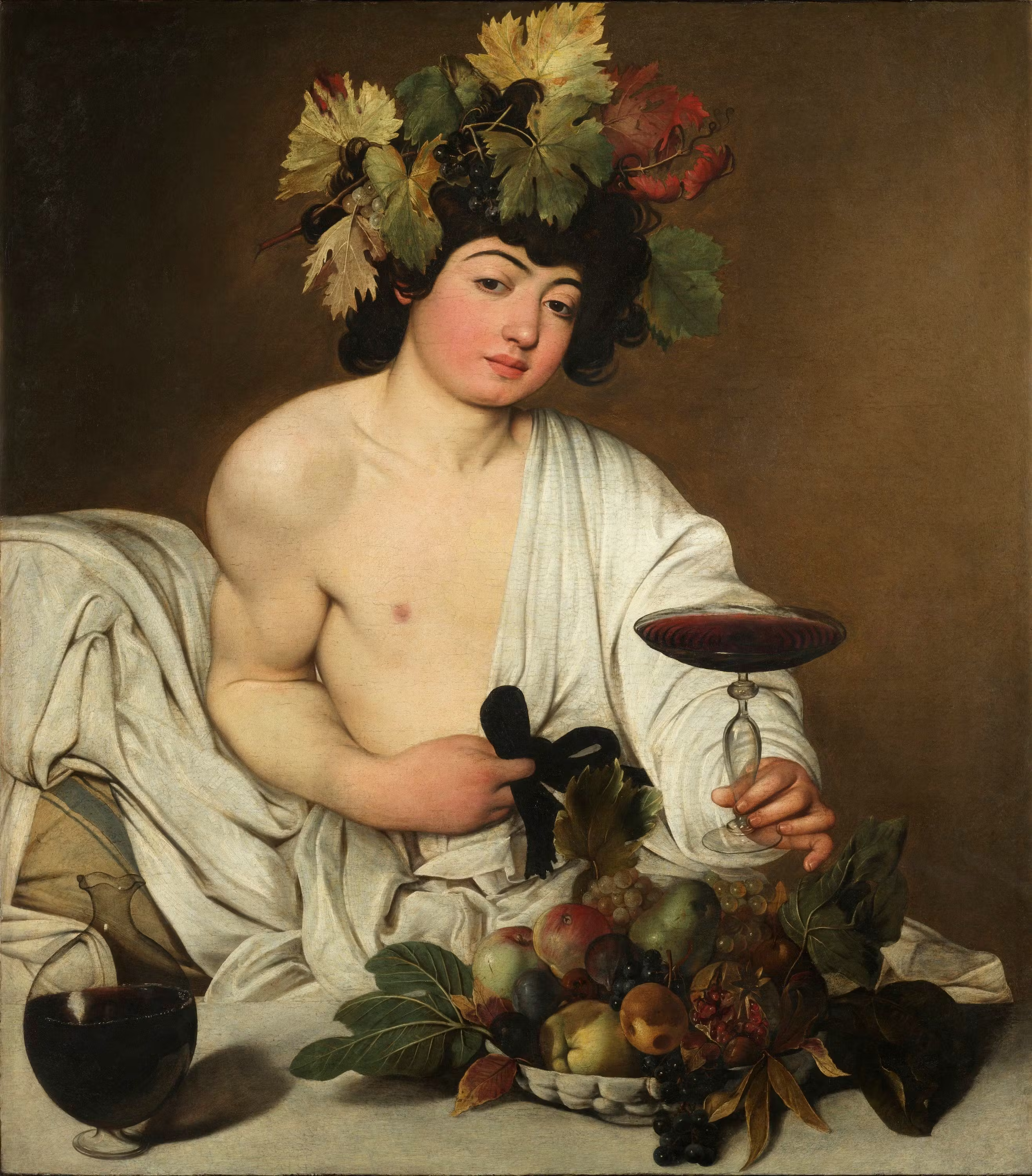
Caravaggio, Bacchus, 1597-1598
Bacchus is painted in a sensual manner with wine and fruits. Was controversial since the figure was painted like the model one-to-one instead of like a beautiful God
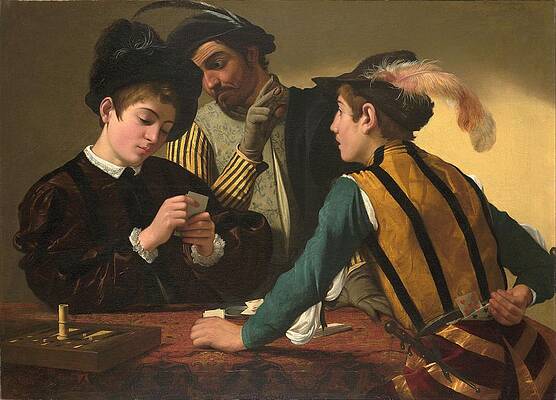
The Cardsharps, 1594
Caravaggio
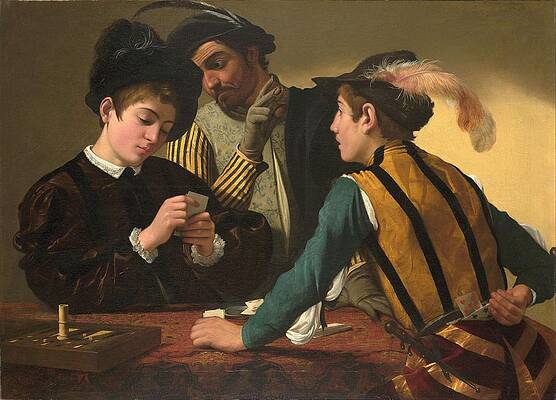
Caravaggio, The Cardsharps, 1594
A young boy is playing cards with two tricksters. One is peeking at his hand while the other is hiding cards. The viewer is seemingly included in this deception
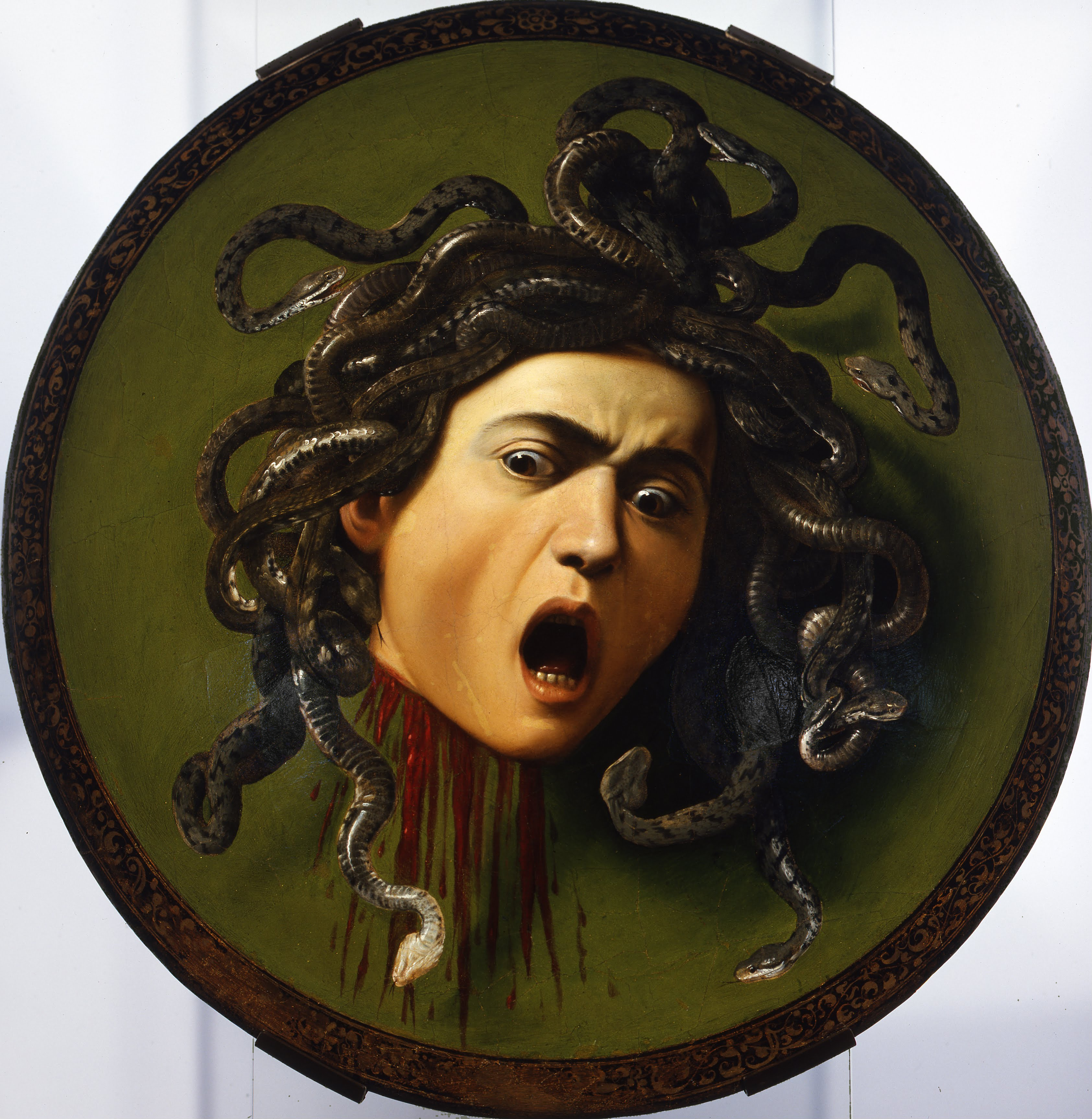
Head of Medusa, 1590s
Caravaggio
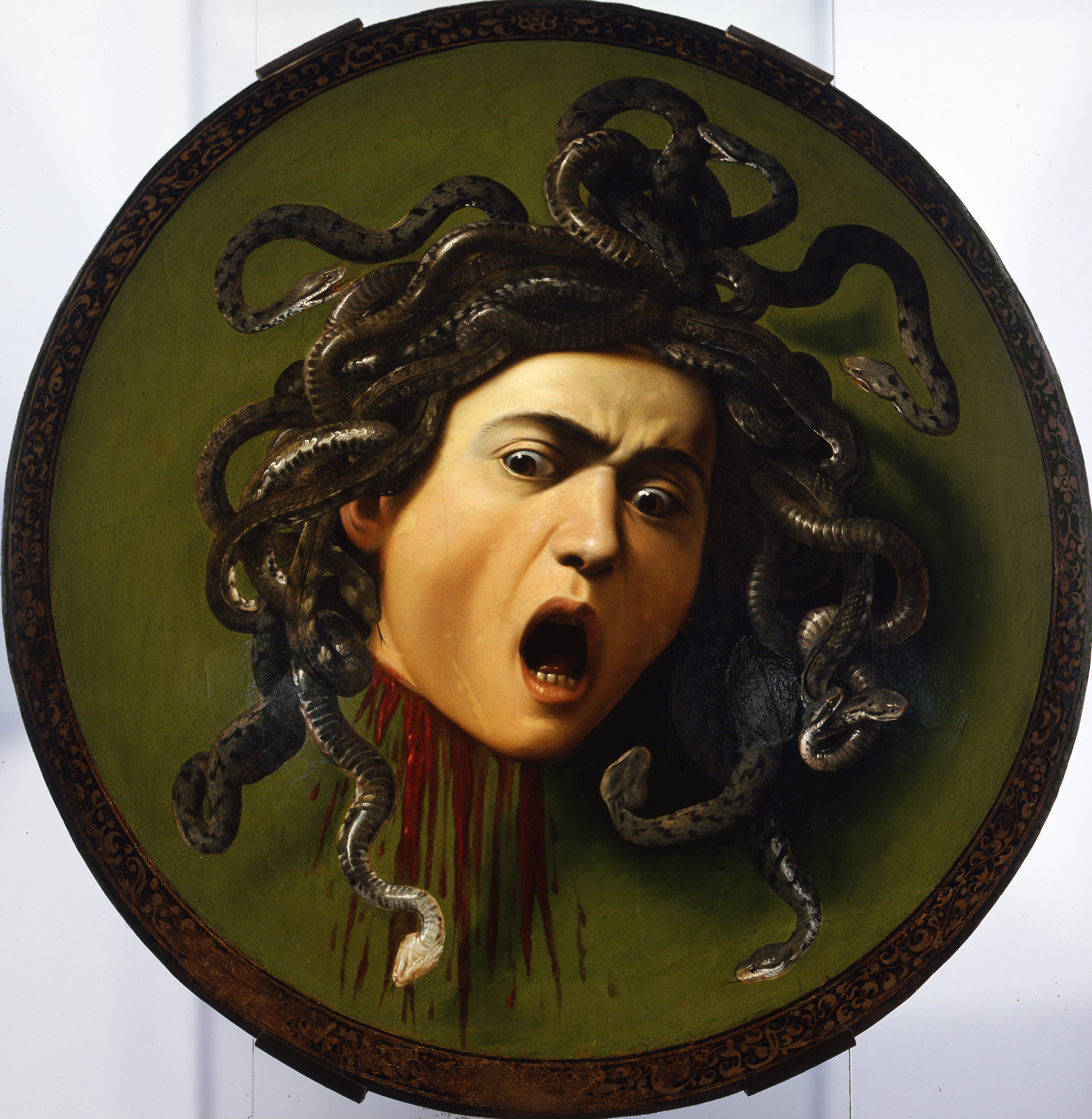
Caravaggio, Head of Medusa, 1590s
Based on the Leonardo story. Painted on a shield, it shows a decapitated Medusa looking terrified in a frozen scream
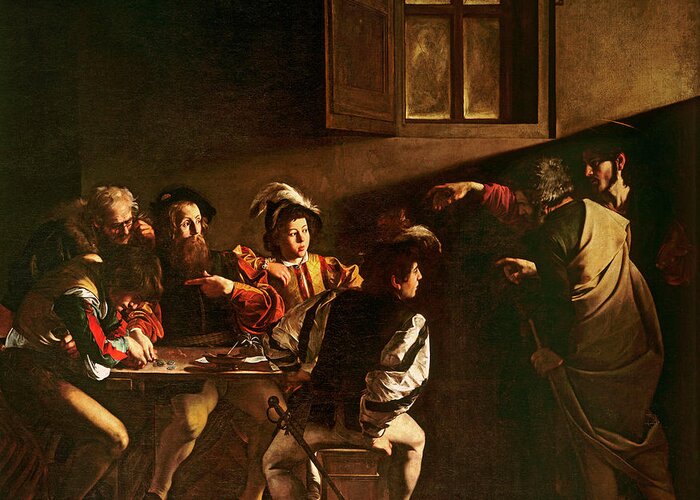
The Calling of St. Matthew, 1599-1600
Caravaggio
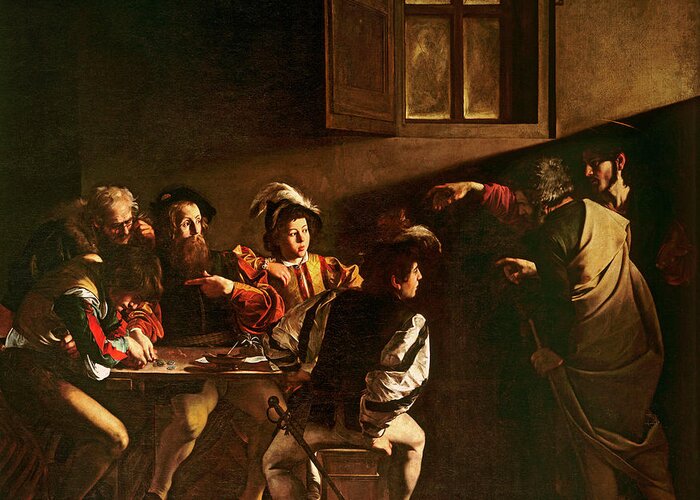
Caravaggio, The Calling of St. Matthew, 1599-1600
Jesus calls Matthew, a tax collector, to follow him. St. Peter and Jesus are on the right, with Jesus pointing towards Matthew
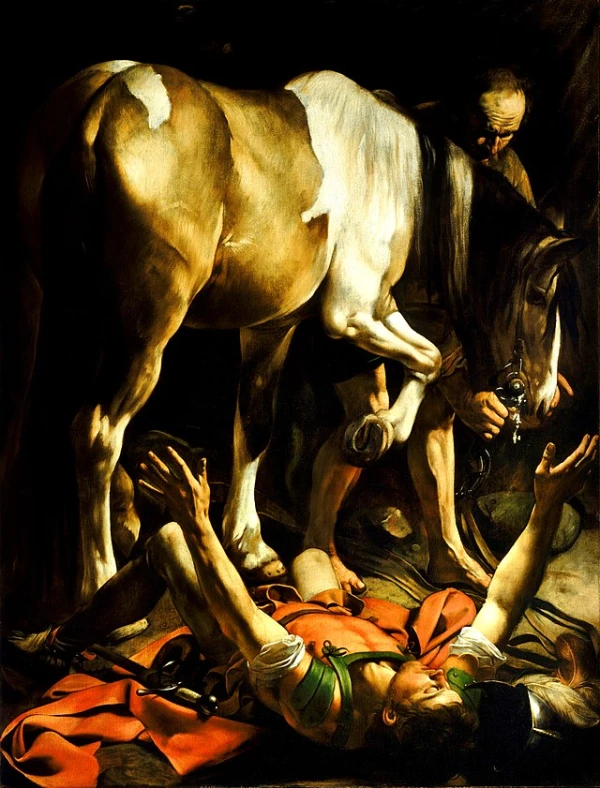
The Conversion of St. Paul, 1601
Caravaggio
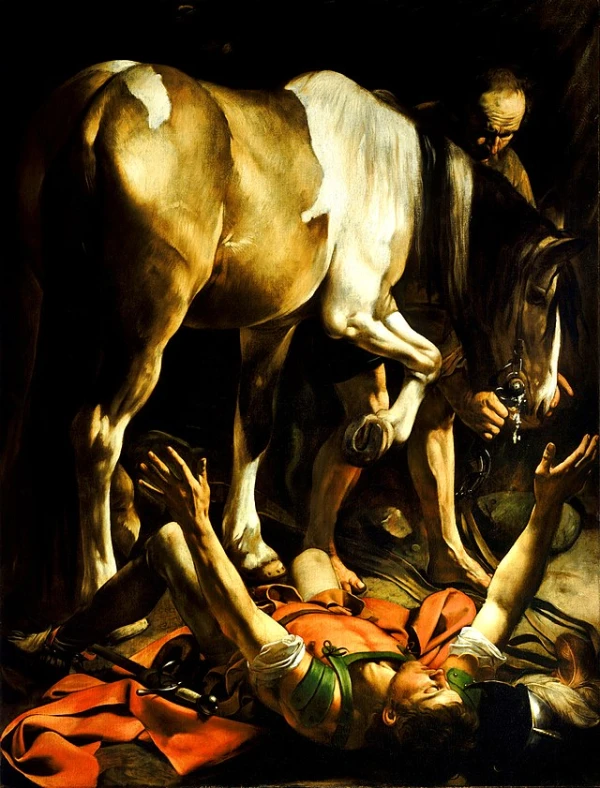
Caravaggio, The Conversion of St. Paul, 1601
Shows the moment Saul falls off his horse after having a divine vision. He later becomes Paul, the dramatic lighting, no action, and foreshortening highlighting vulnerability and awakening
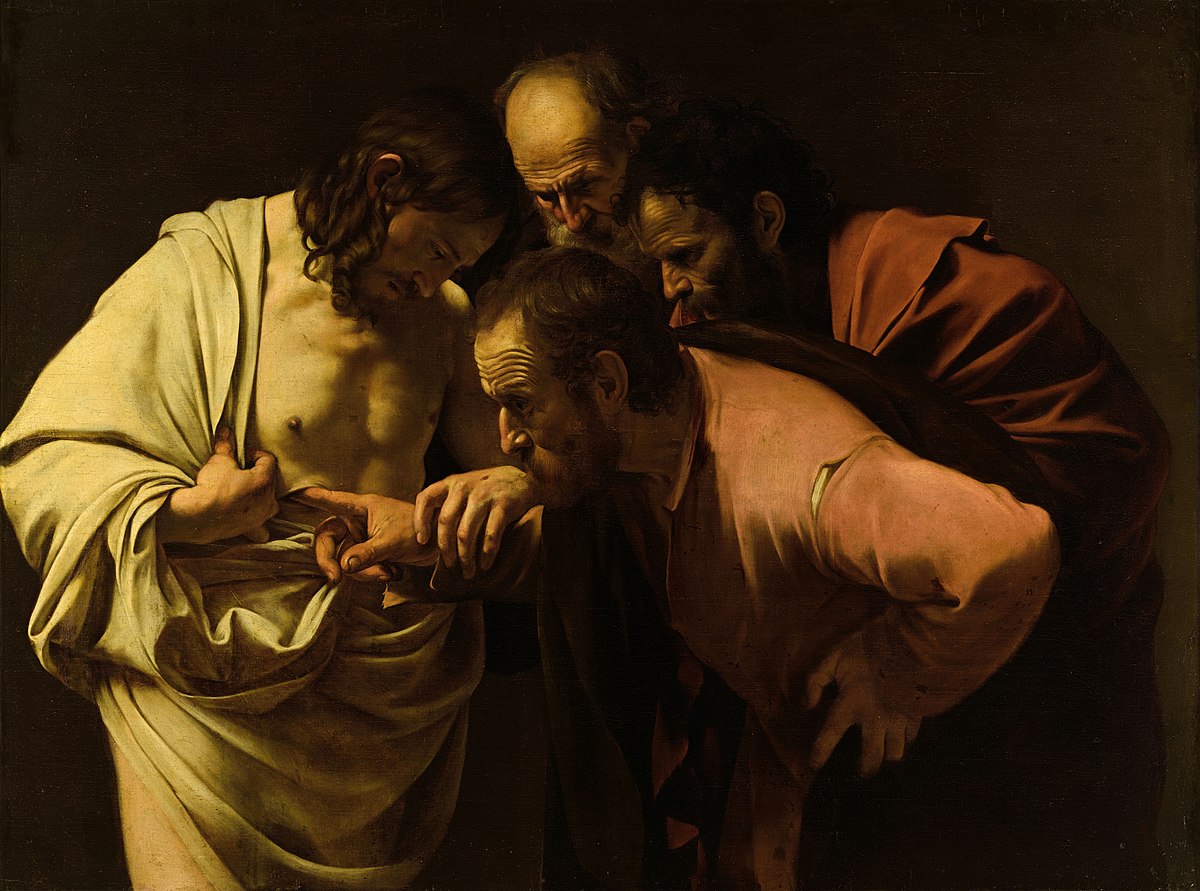
The Incredulity of St. Thomas, 1602-1603
Caravaggio
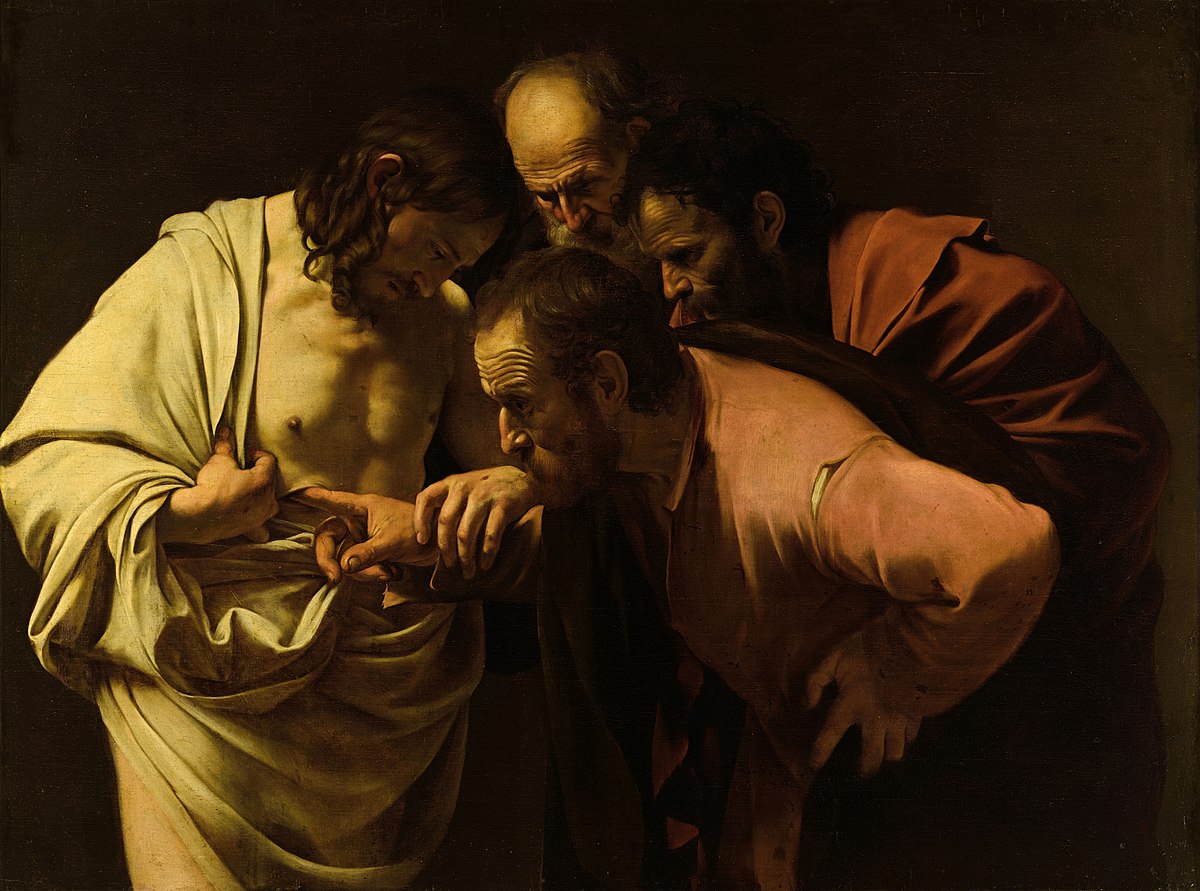
Caravaggio, The Incredulity of St. Thomas, 1602-1603
Shows St. Thomas doubting the resurrection of Jesus. He puts his finger into Jesus’ wound to confirm that he’s real. Is expressive with surprise and almost asks the viewer to come closer
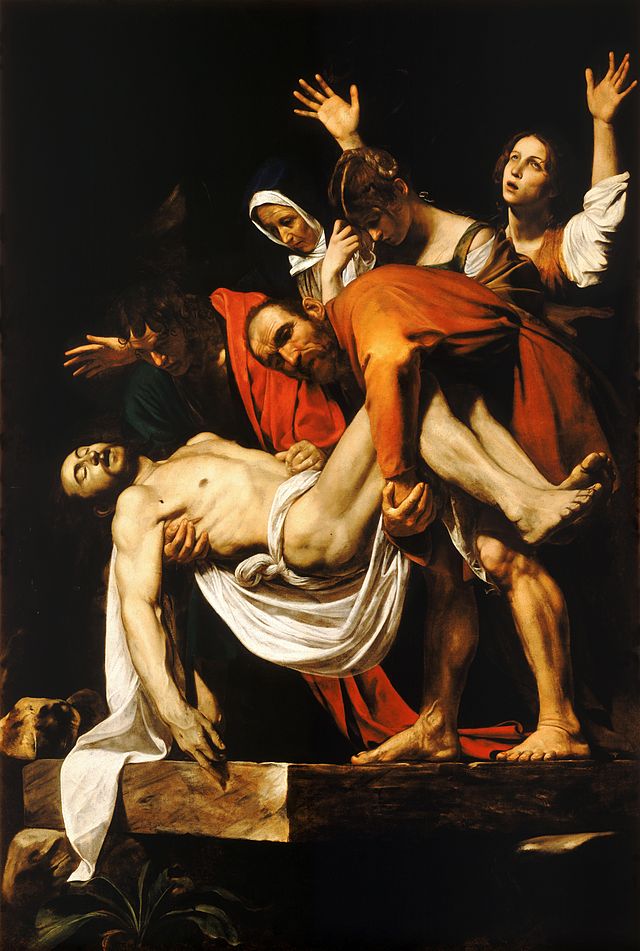
The Entombment, 1603-1604
Caravaggio
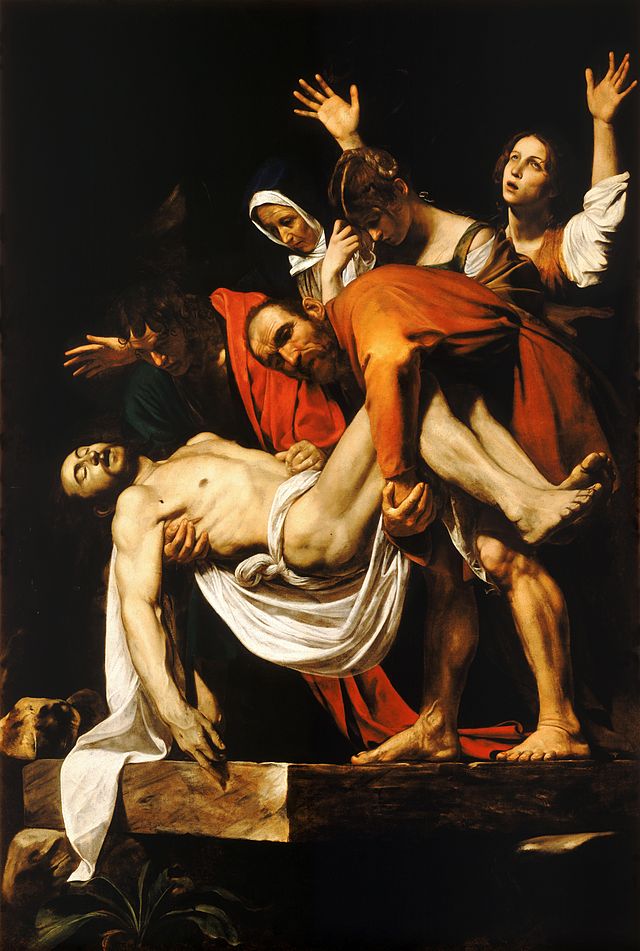
Caravaggio, The Entombment, 1603-1604
Shows Jesus’ body being lowered into the coffin with the Virgin Mary looking down and Mary Magdalene close by. Jesus seems somewhat still alive with veins showing, seemingly asleep

The Beheading of John the Baptist, 1608
Caravaggio
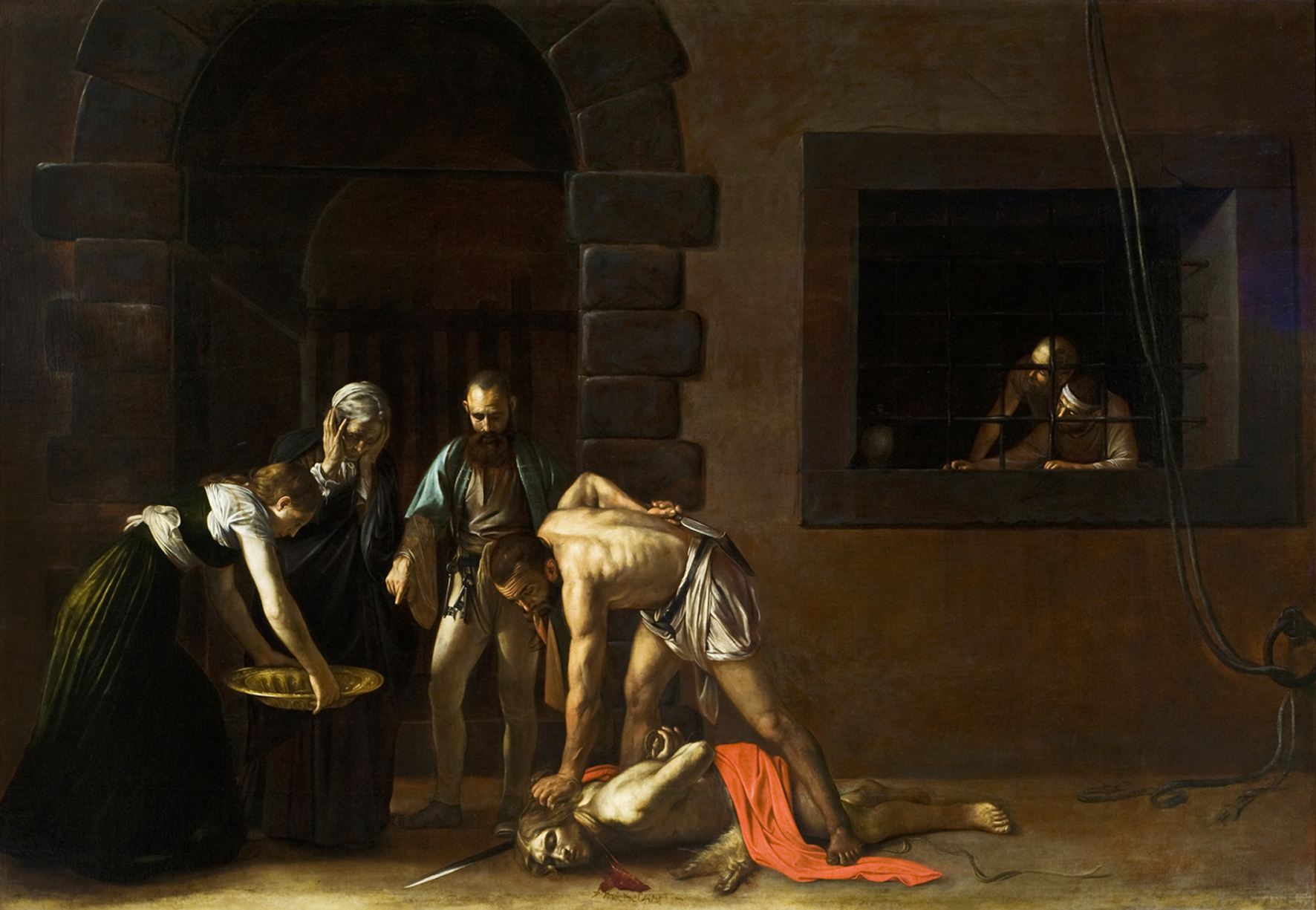
Caravaggio, The Beheading of John the Baptist, 1608
Shows the beheading of John the Baptist and is the only work with his artist signature, written in John’s blood. Made for the Knights of Malta as payment for his knighthood
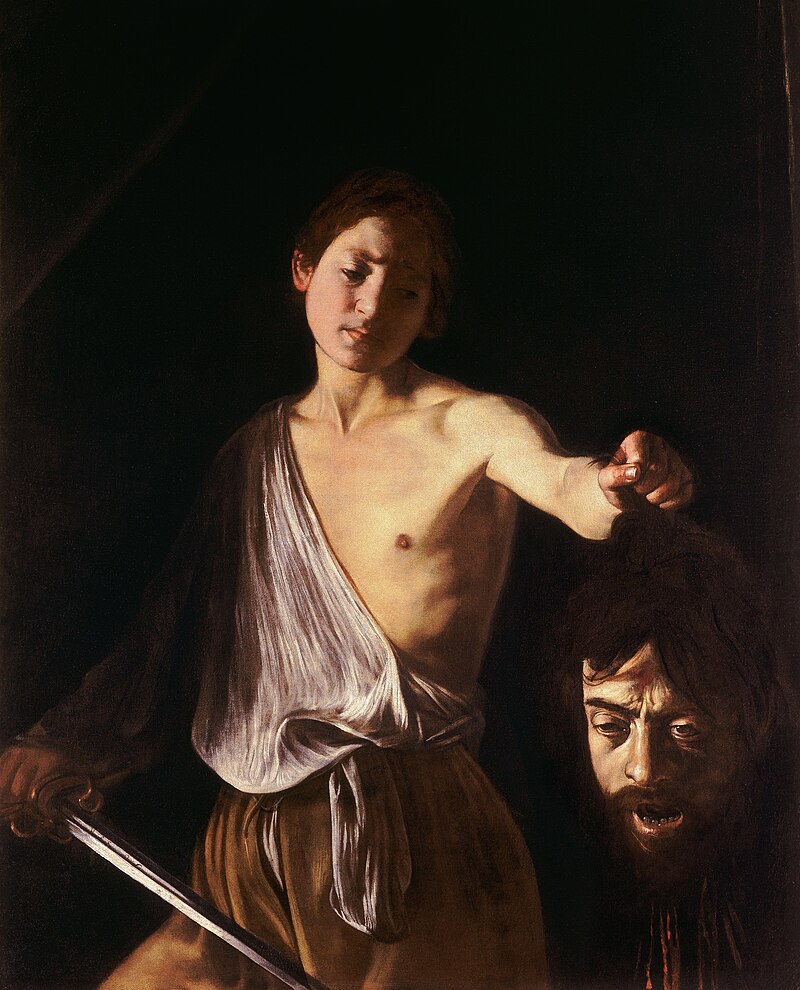
David with the Head of Goliath, 1609-1610
Caravaggio
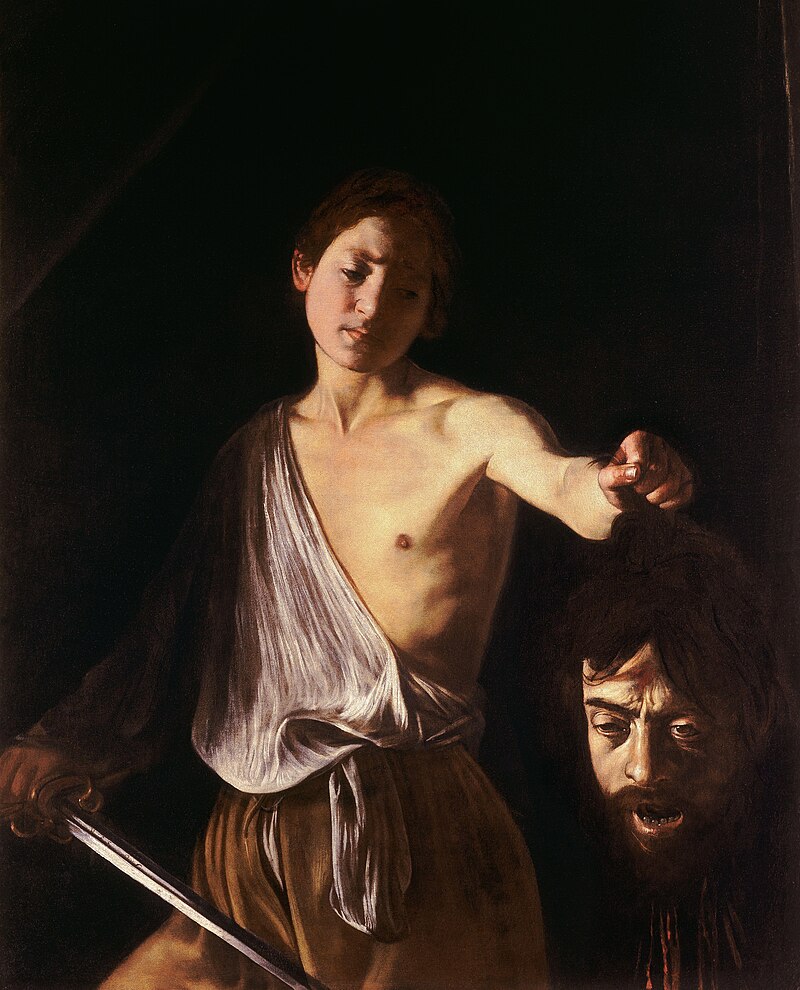
Caravaggio, David with the Head of Goliath, 1609-1610
David is holding Goliath’s head, but it’s painted as Caravaggio’s self-portrait. This symbolizes his guilt and self-reflection on his murder conviction
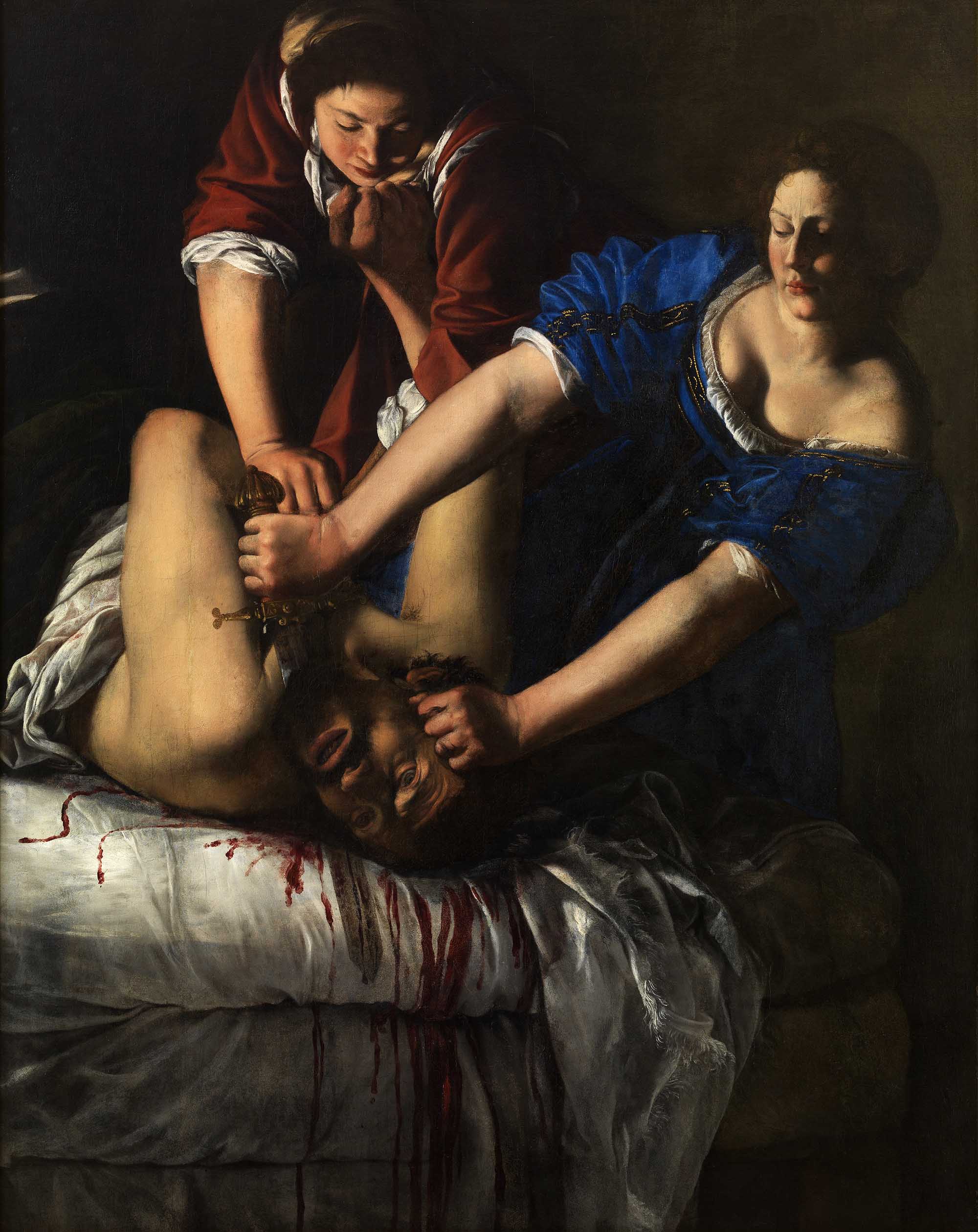
Judith Beheading Holofernes, 1612-1613
Artemisia Gentileschi

Artemisia Gentileschi, Judith Beheading Holofernes, 1612-1613
Judith decapitates Holofernes to save her people. The painting depicts Judith as fierce and strong, her maid assisting in holding his hair. It symbolizes female empowerment and revenge
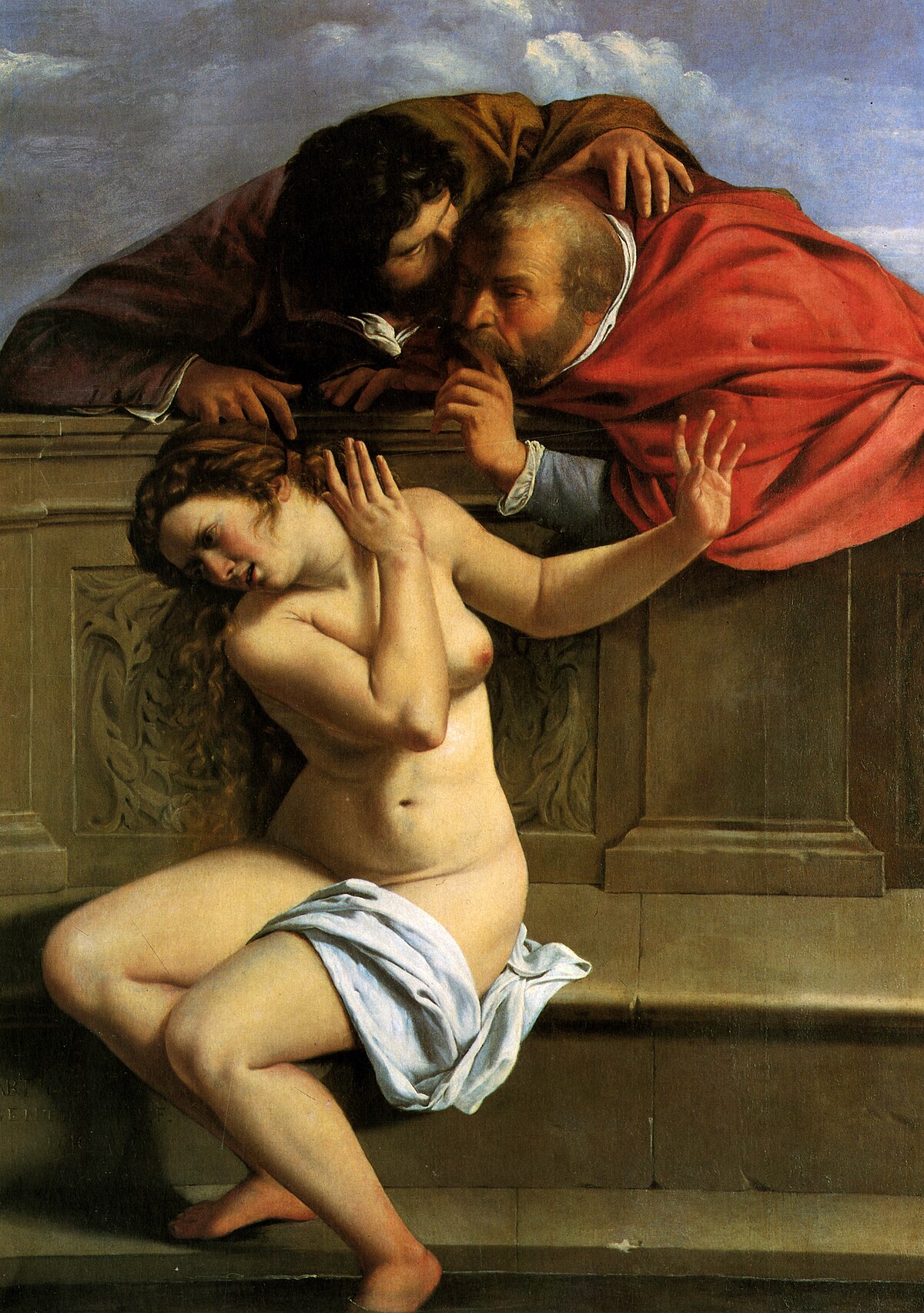
Susanna and the Elders, 1610
Artemisia Gentileschi
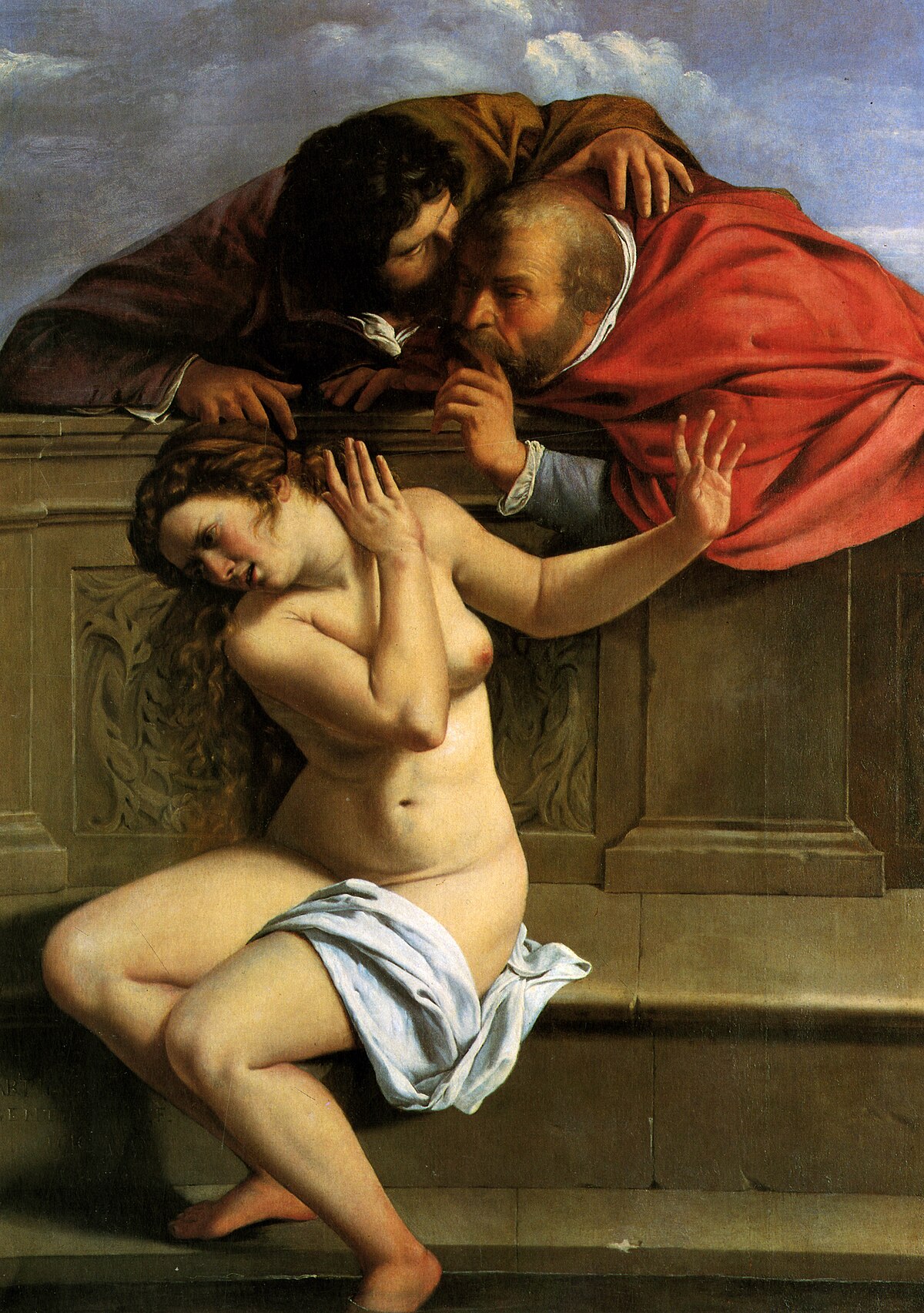
Artemisia Gentileschi, Susanna and the Elders, 1610
Unlike others works, Susanna is drawn resisting the elders with a disgusted expression, showing vulnerability and inner strength. There’s an emphasis on the violence of the assault and power dynamic
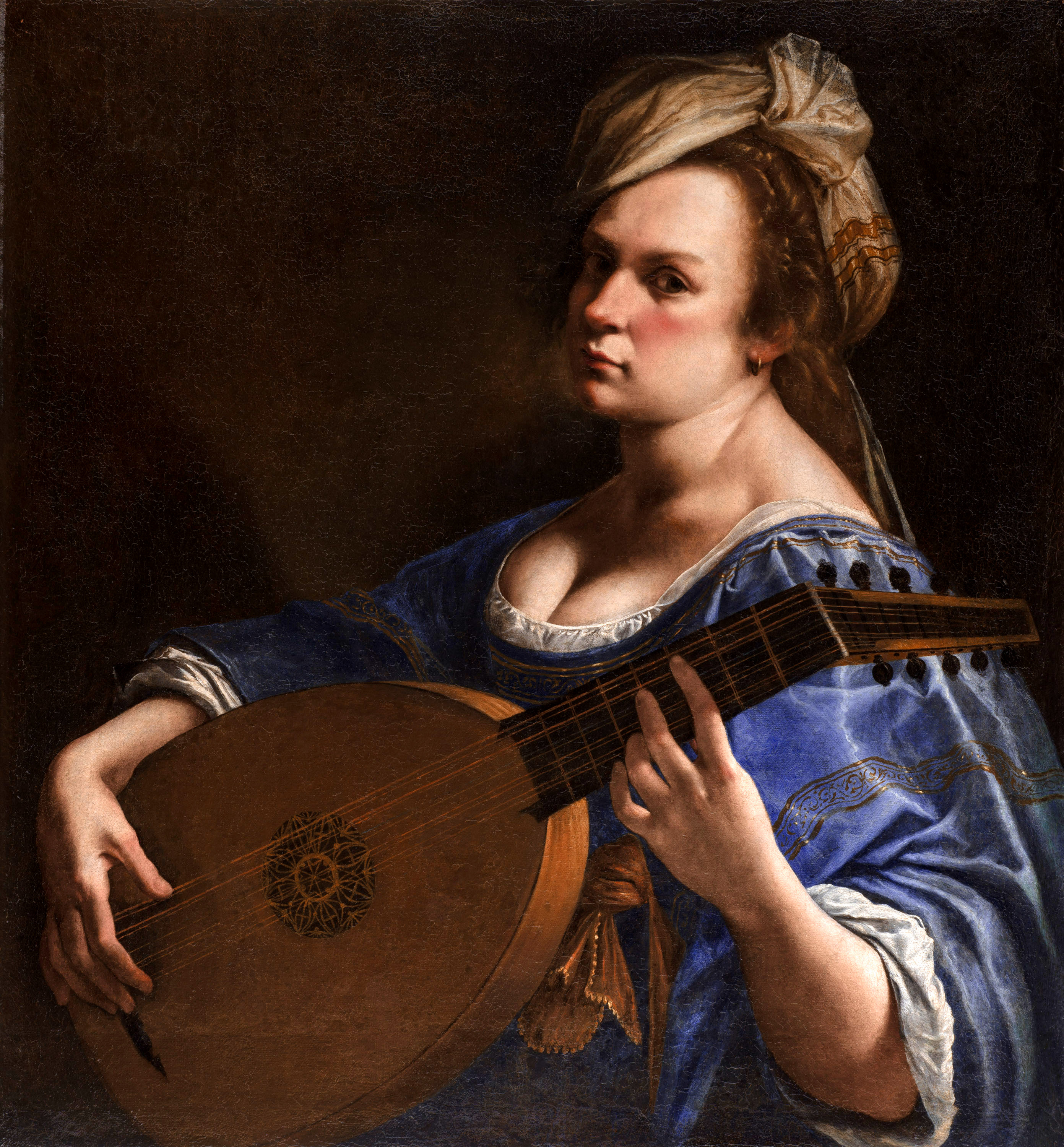
Self-Portrait as a Lute Player, Wadsworth Atheneum, Hartford, 1616-1617
Artemisia Gentileschi
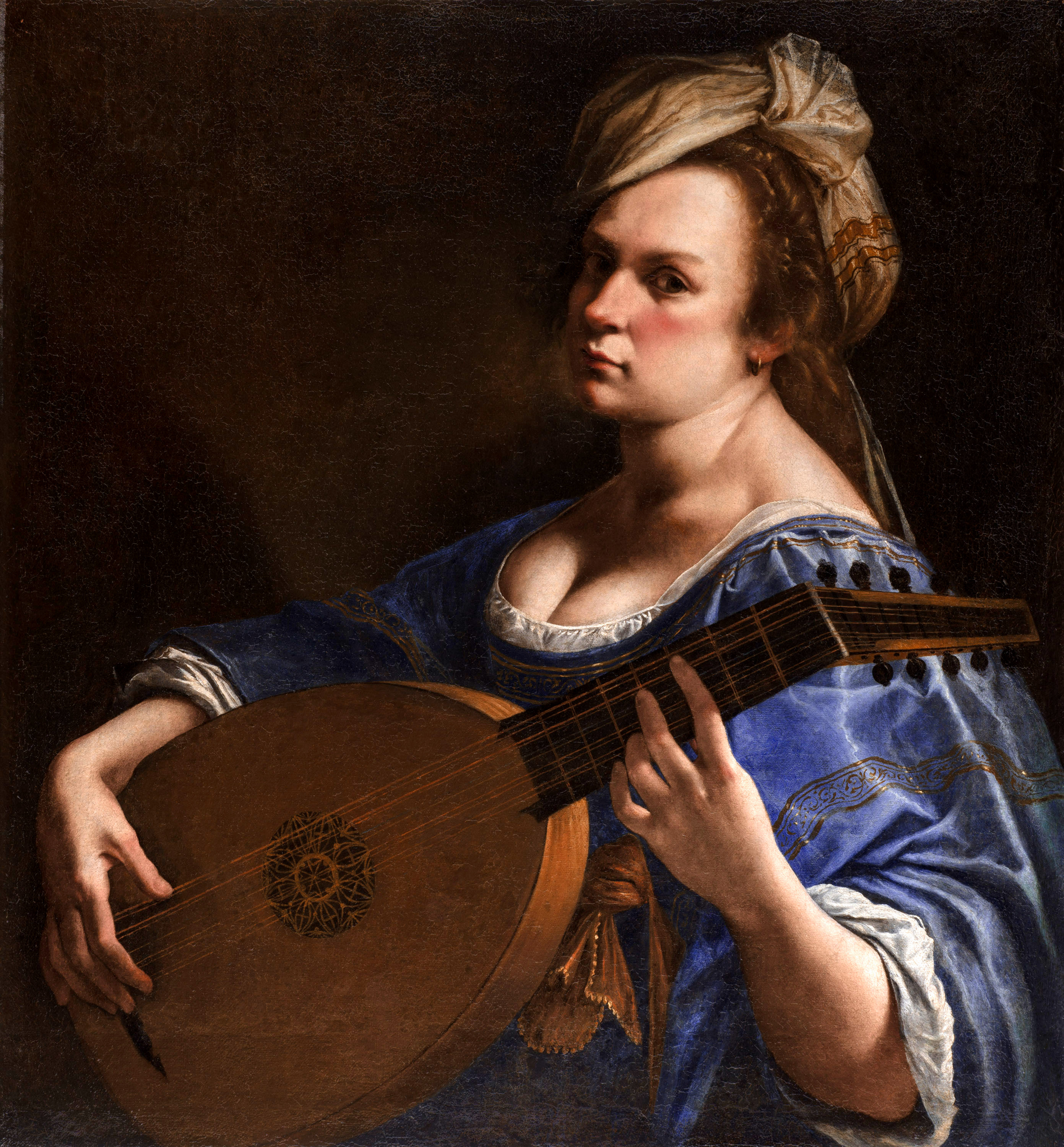
Artemisia Gentileschi, Self-Portrait as a Lute Player, 1616-1617
Draws herself in a gypsy costume showing musical talent and sensuality. By looking at the viewer, she shows assertiveness and strong identity.
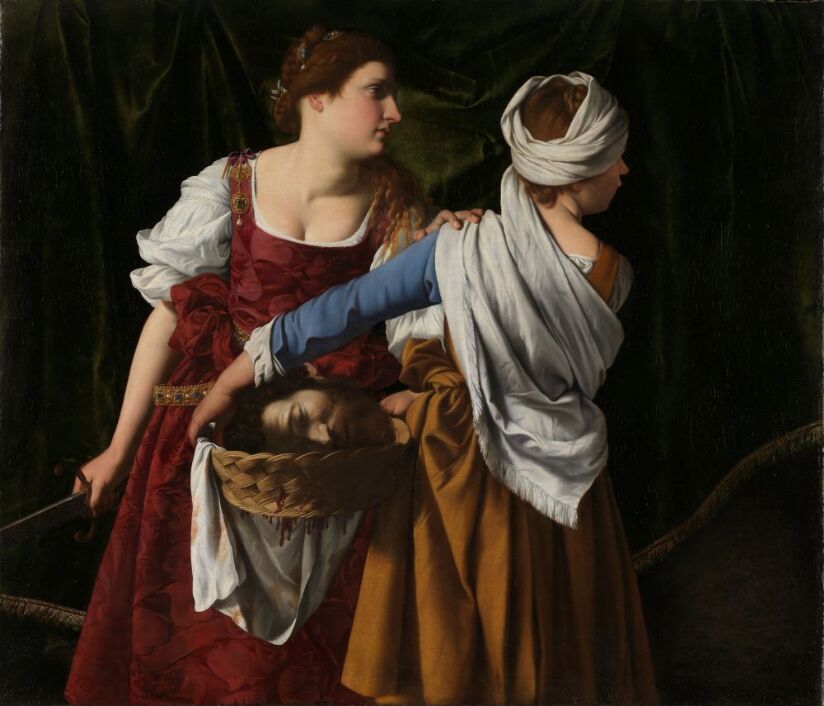
Judith and Her Maidservant, 1608-1609
Orazio Gentileschi
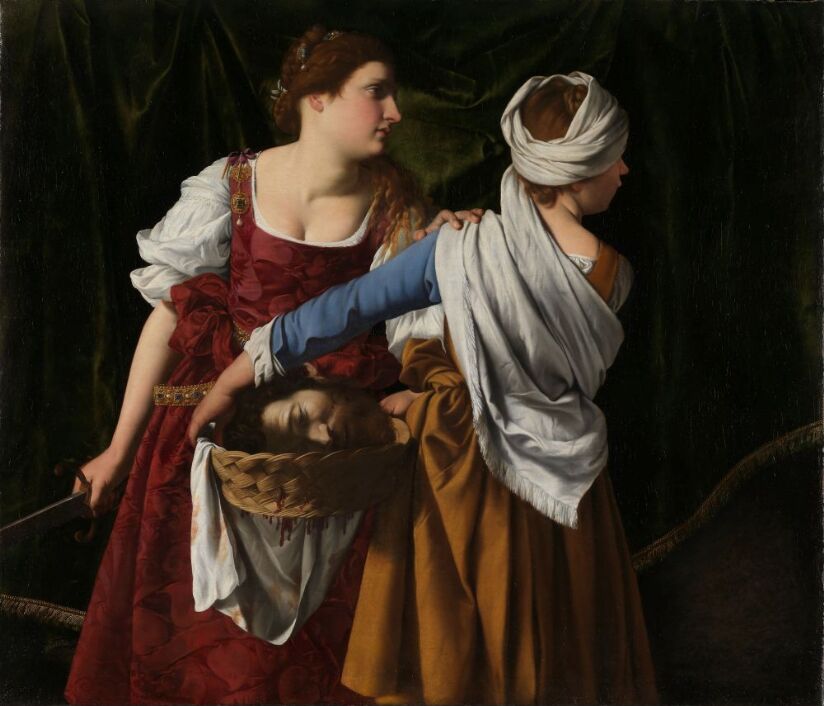
Orazio Gentileschi, Judith and Her Maidservant, 1608-1609
Shows the moment Judith and her maid are escaping after beheading Holofernes. Judith is shown calm and determined, while the maid is fearful scanning the area

Lute Player, 1612-1615
Orazio Gentileschi

Orazio Gentileschi, Lute Player, 1612-1615
The lute symbolizes being sexually available and the yellow dress has a torn opening on the side, inviting the viewer to make the first move. Her back is turned, creating a sense of vulnerability
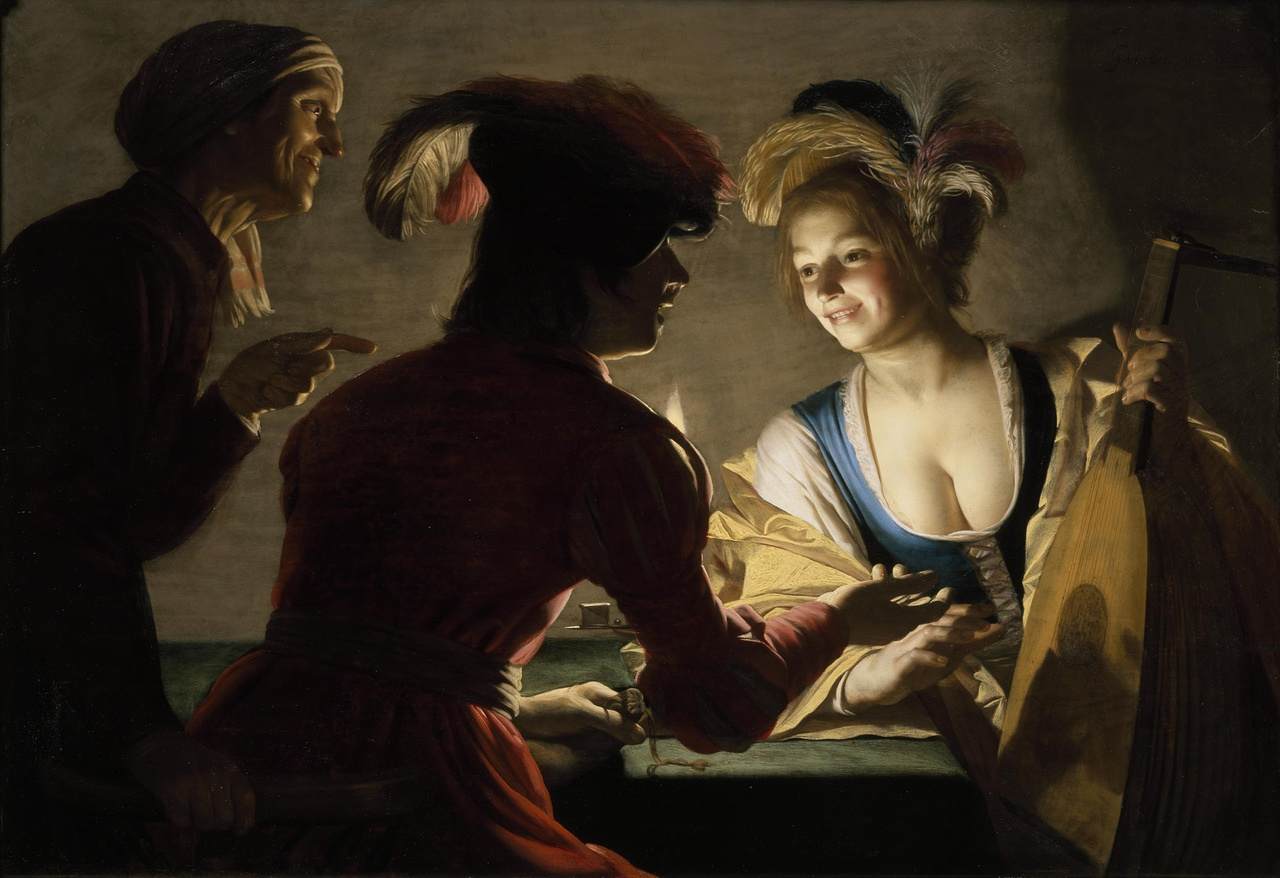
Lute Player and Procuress, 1625
Gerrit van Honthorst

Garrit van Honthorst, Lute Player and Procuress, 1625
A woman plays the lute while a procuress is in shadow on the left. She points towards a man in shadow who is holding a money bag in one hand, reaching out for the lute player. This arrangement hints at seduction and transaction
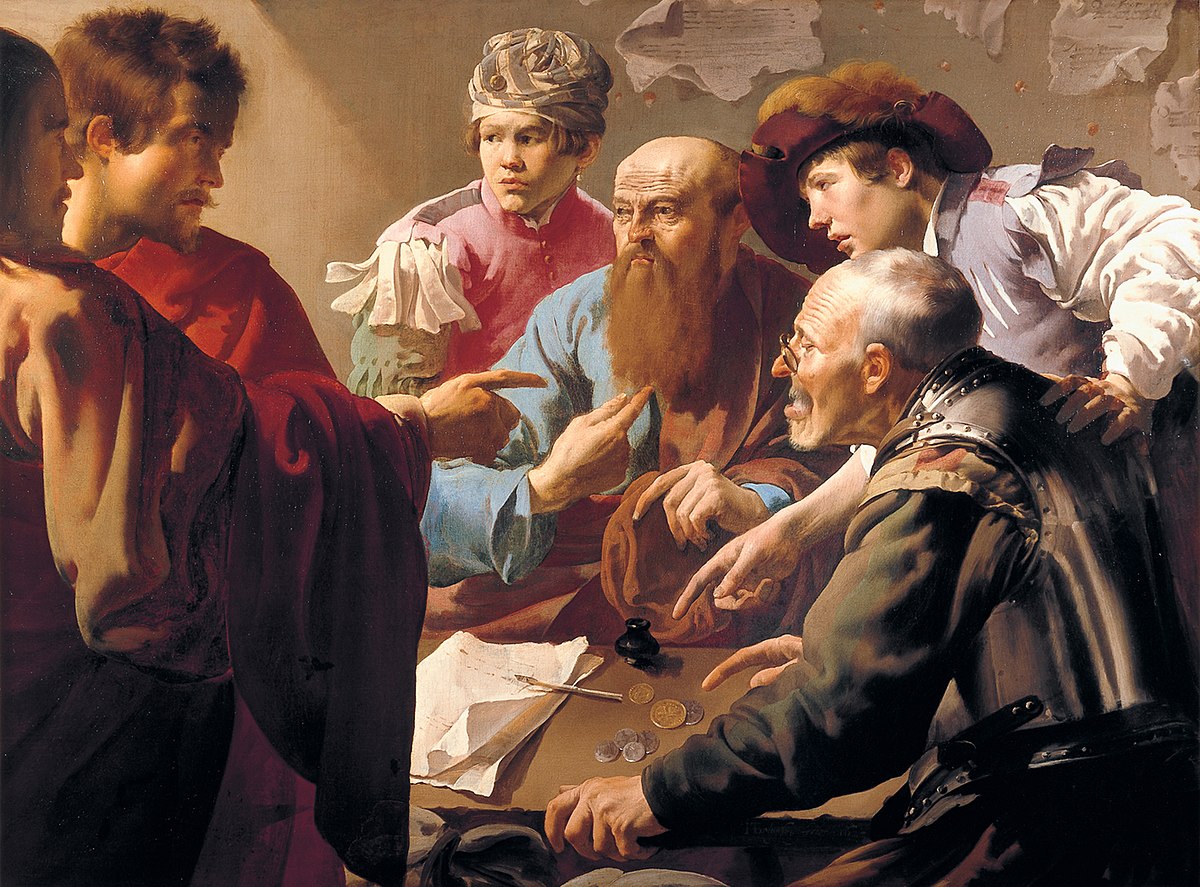
The Calling of St. Matthew, 1621
Hendrick ter Brugghen
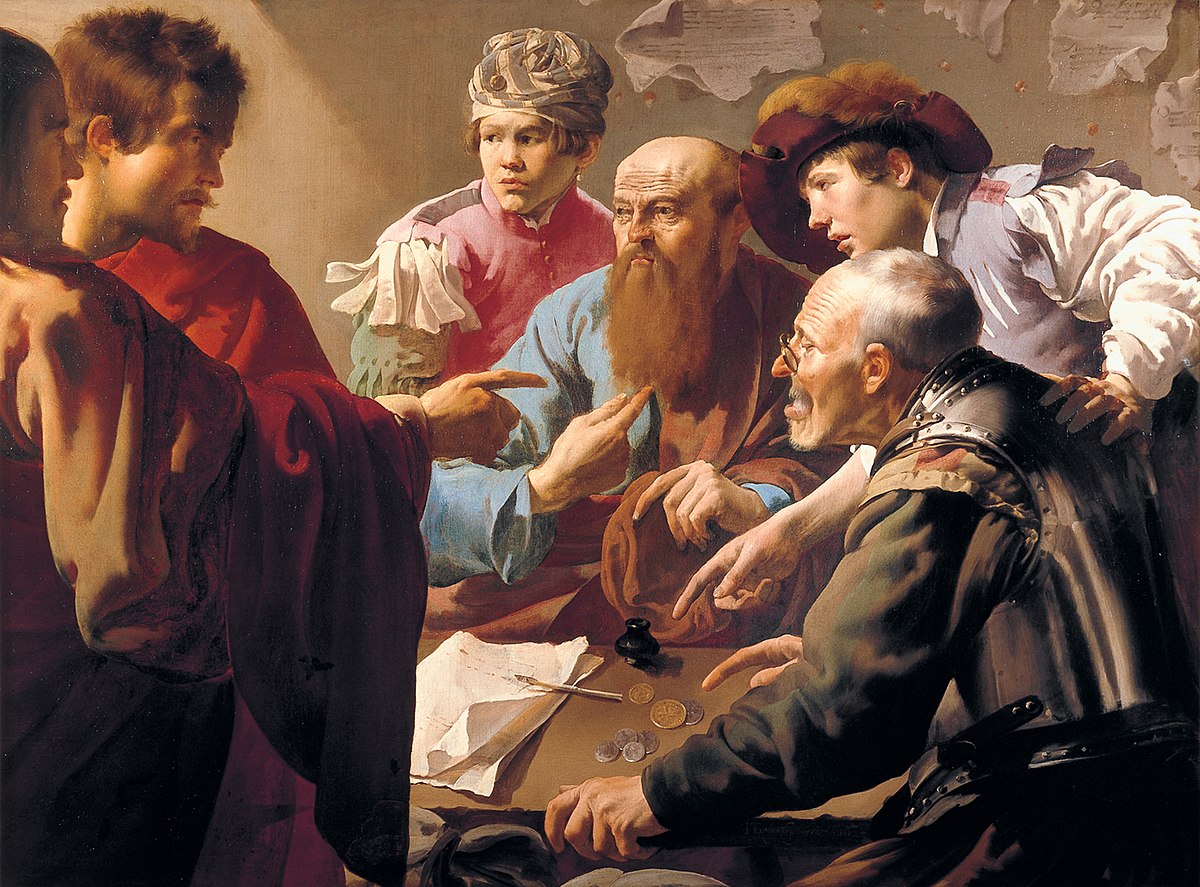
Hendrick ter Brugghen, The Calling of St. Matthew, 1621
Jesus is on the left in shadow pointing at Matthew. Matthew points at himself and the figures surround him in disbelief and curiosity. Lots of hand movements
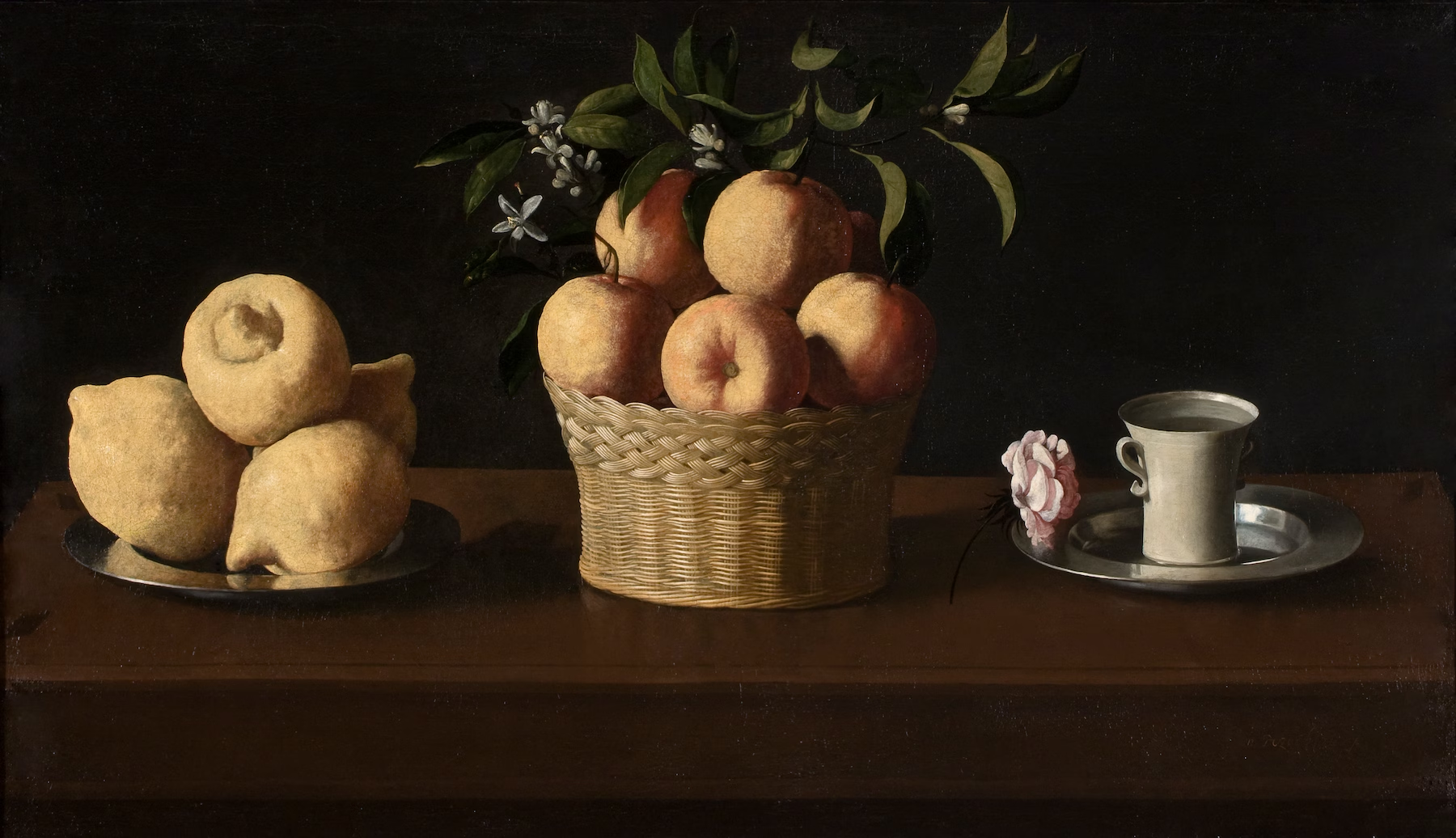
Still Life with Leons, Oranges, and Cup, 1633
Francisco de Zurbaran
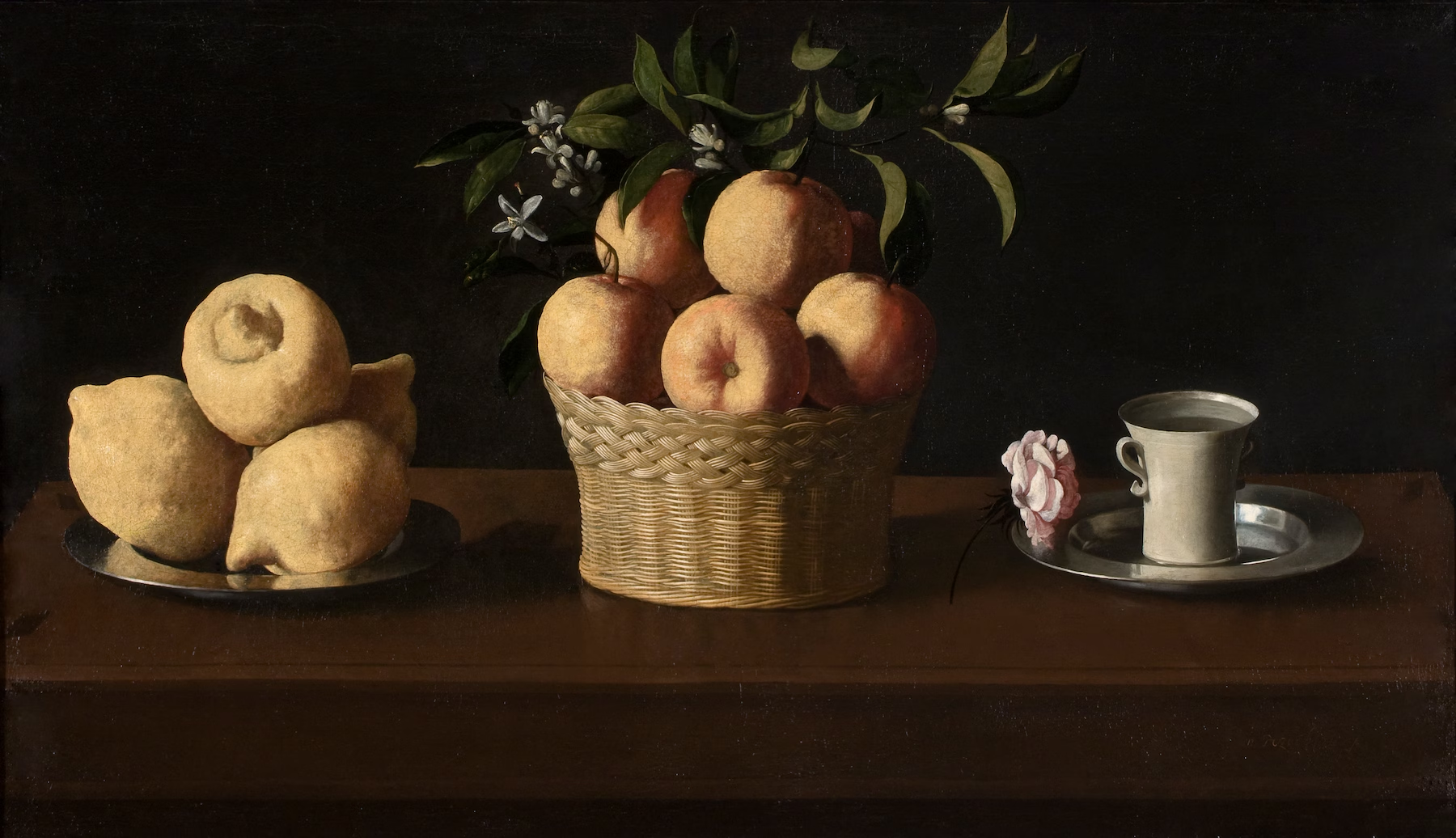
Francisco de Zurbaran, Still Life with Lemons, Oranges, and Cup, 1633
The background is black like a typical chiaroscuro painting. The subjects are under controlled lighting and the composition feels very man-made and calculated.
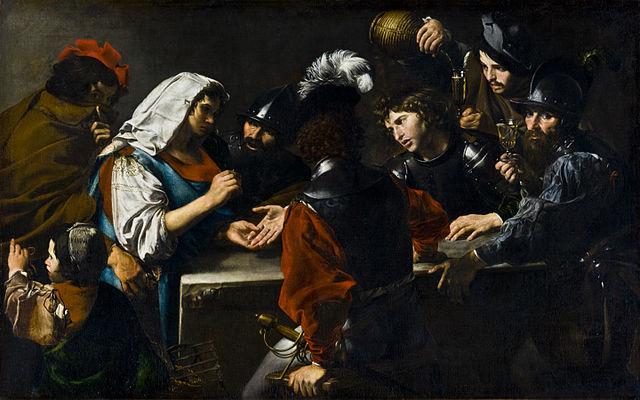
Fortune Teller with Soldiers, 1620
Valentin de Boulogne
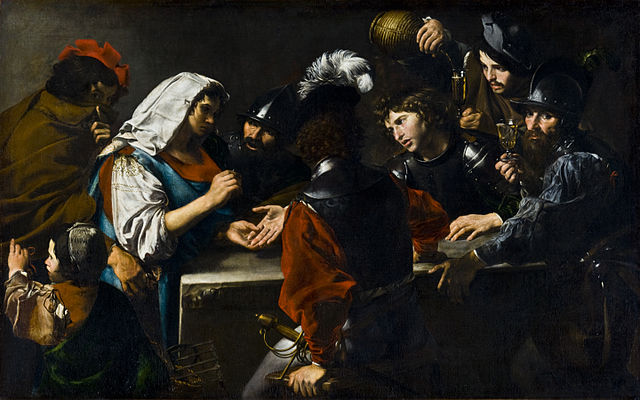
Valentin de Boulogne, Fortune Teller with Soldiers, 1620
The scene shows a fortune teller reading the palm of a soldier. While doing so, a burglar is pick pocketing her, and the burglar is being pick pocketed by a boy. Theme seems to be about deception

Henry VIII, 1540
Hans Holbein the Younger
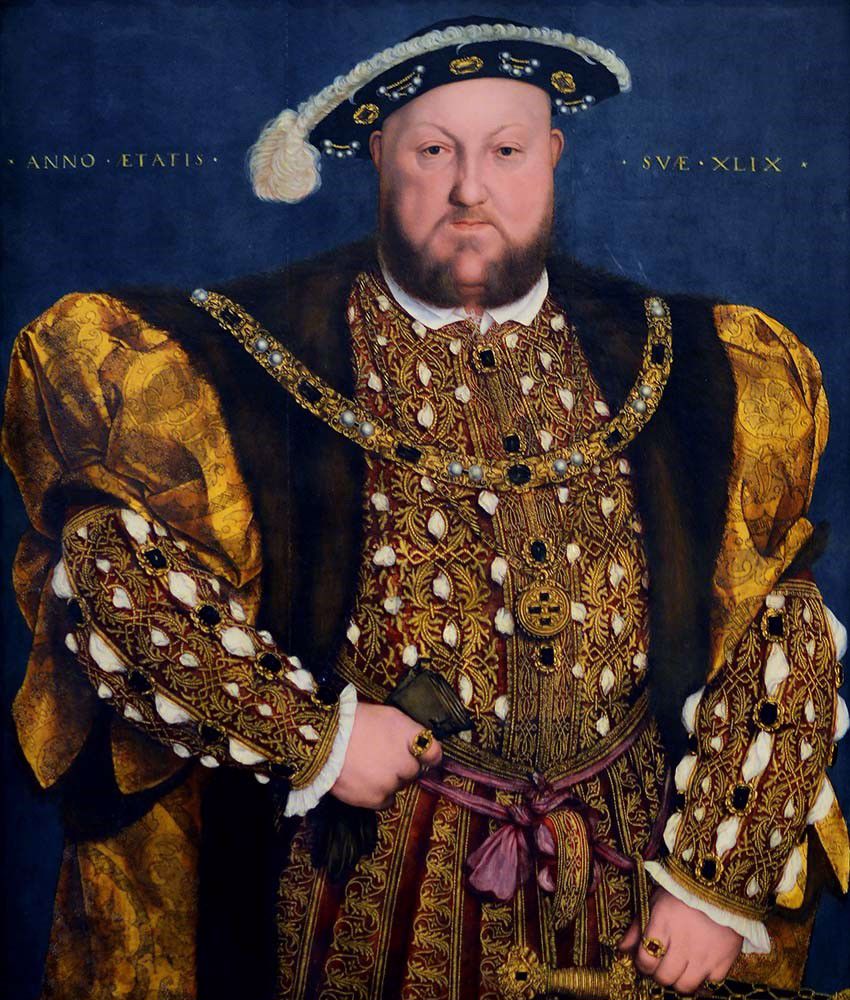
Hans Holbein the Younger, Henry VIII, 1540
The king is portrayed as confident and powerful. He’s in a commanding pose with rich clothing and large waistline
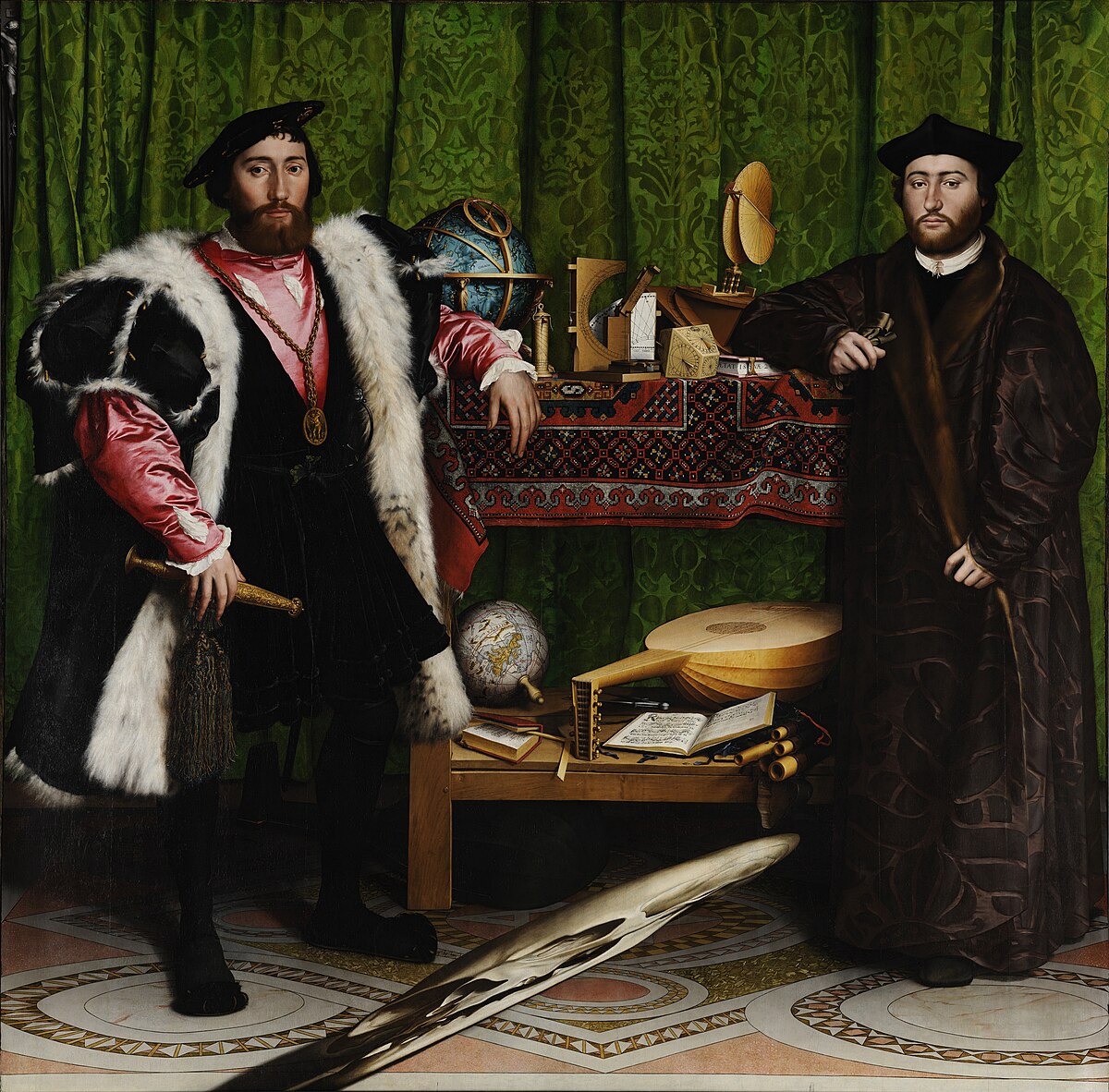
The Ambassadors (Jean de Dinteville and Georges de Selve), National Gallery, London, 1533
Hans Holbein the Younger
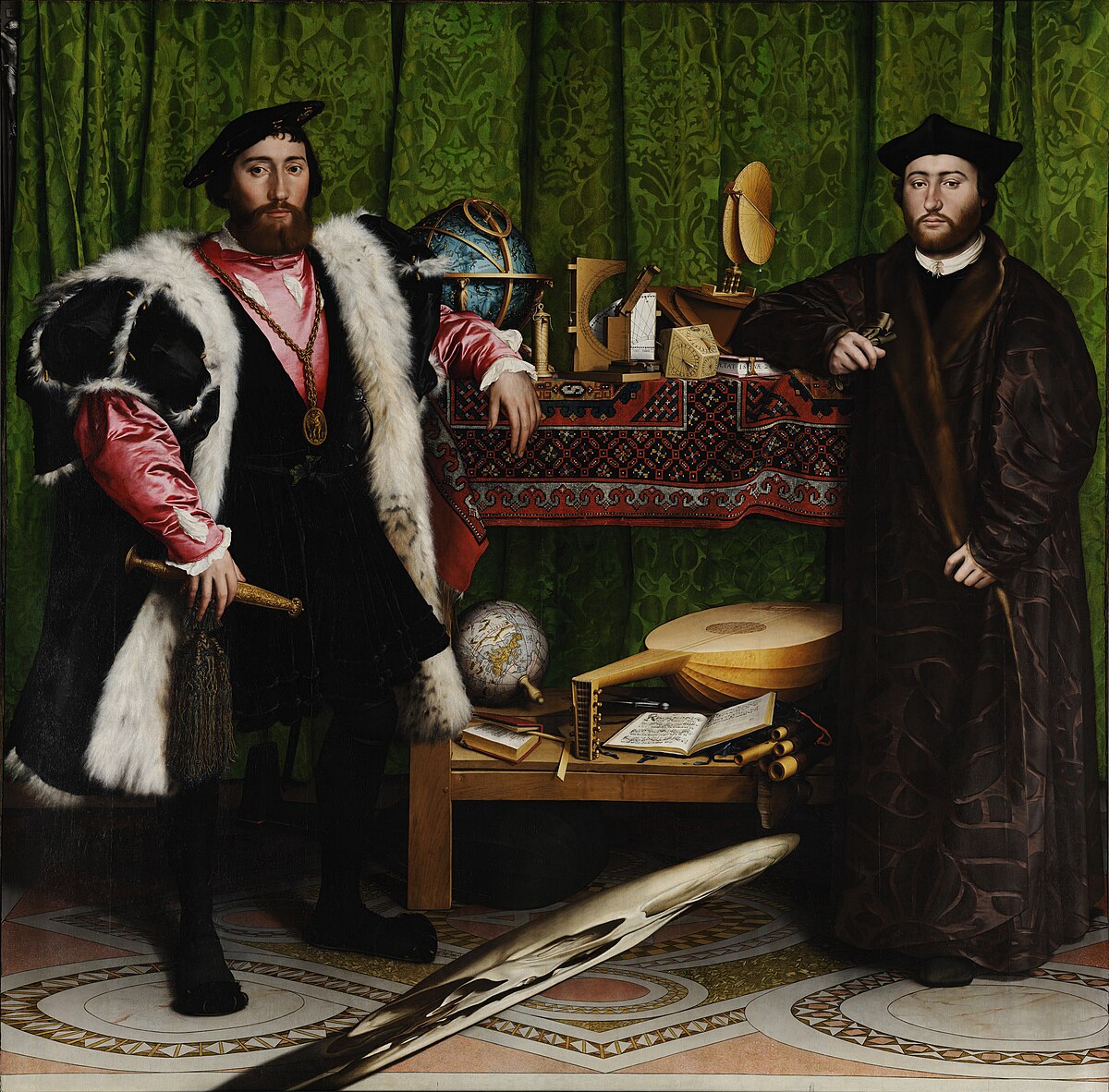
Hans Holbein the Younger, The Ambassadors, 1533
Figures are two ambassadors of France. They stand in front of musical instruments, a globe, books, and a stretched out skull that all symbolize mortality.

Anamorphic Portrait of Edward VI, 1546
William Scrots

William Scrots, Anamorphic Portrait of Edward VI, 1546
The young king of England features a stretched out portrait. Showcases his skill in this technique and symbolizes the complexity of power and life
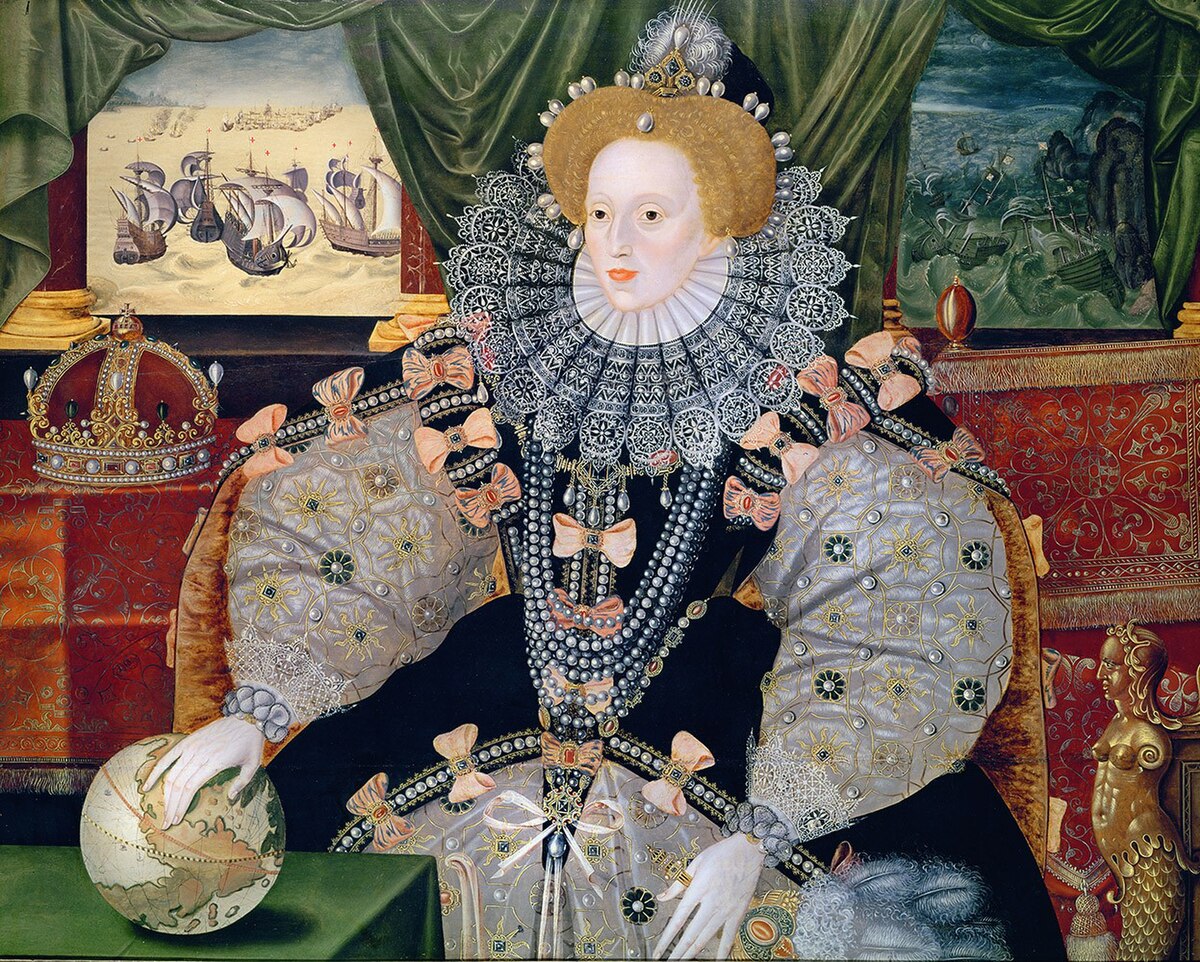
Anonymous, The Armada Portrait of Queen Elizabeth I, Woburn Abbey, England, 1588
This painting commemorates Queen Elizabeth I’s victory over the Spanish Armada. In the background on the left are English fireships driving the Spanish fleets onto rocky coast on the right.
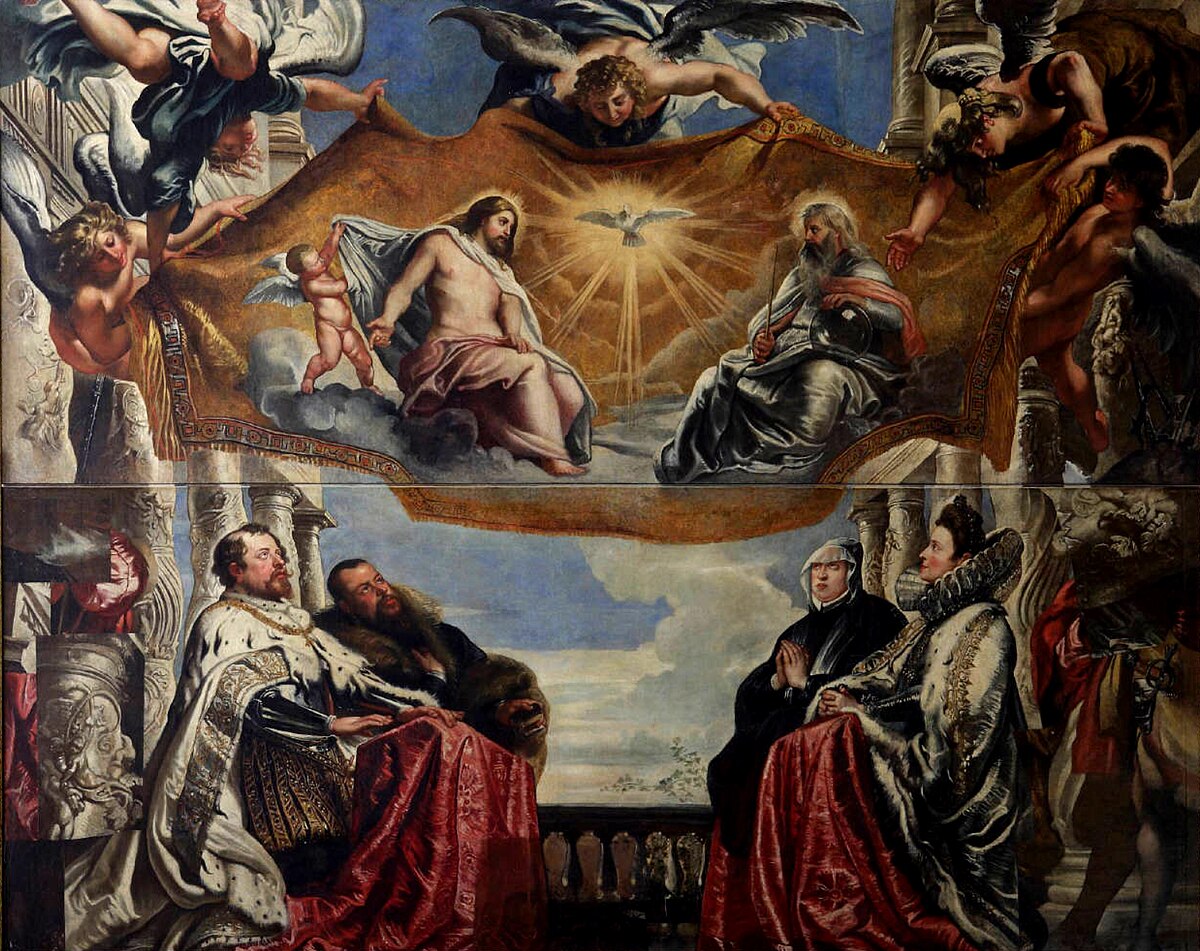
Gonzaga Altarpiece of the Trinity, 1604-1605
Peter Paul Rubens
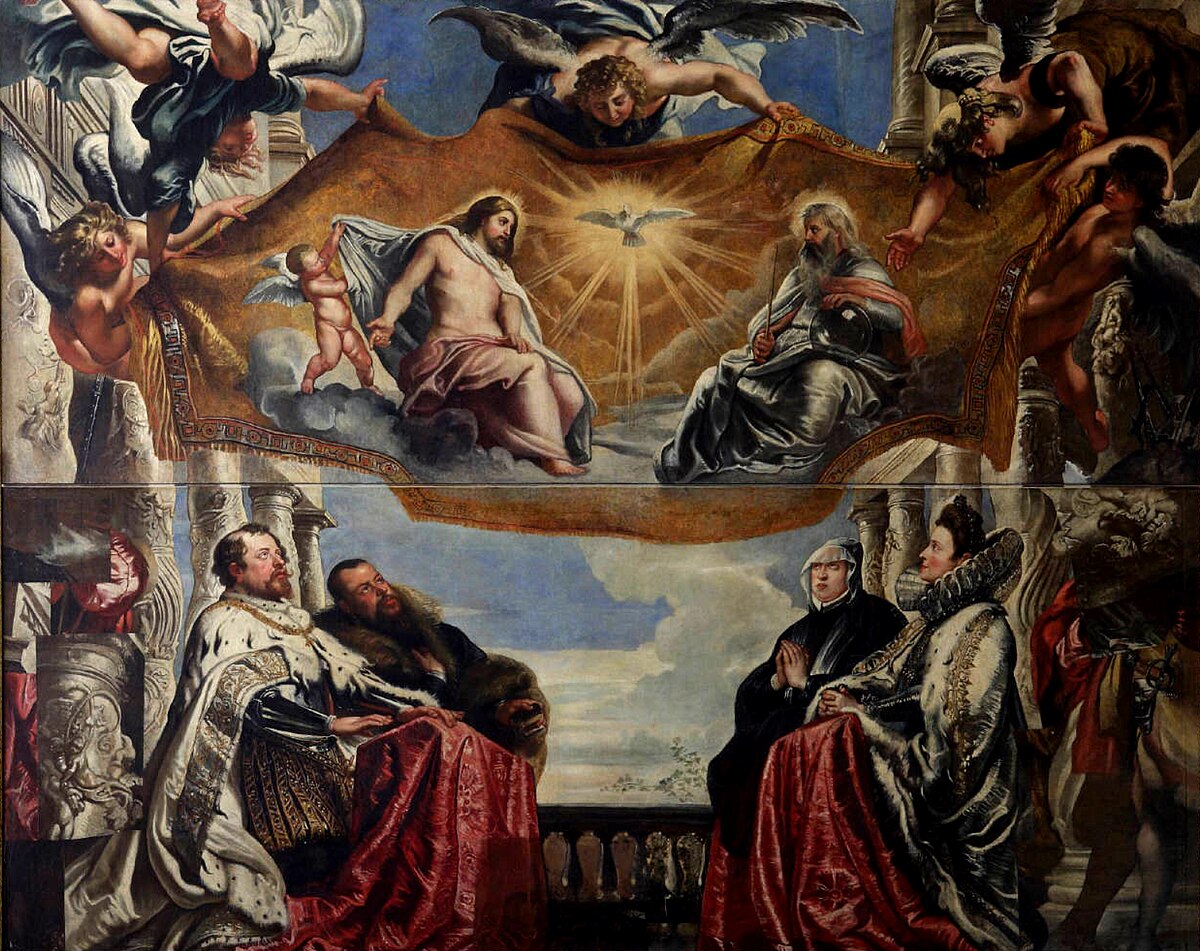
Peter Paul Rubens, Gonzaga Altarpiece of the Trinity, 1604-1605
The Holy Trinity is depicted as if drawn on a tapestry cloth. The clients, the Gonzaga family, rulers of Mantua, are seen looking up as if the holy figures were real
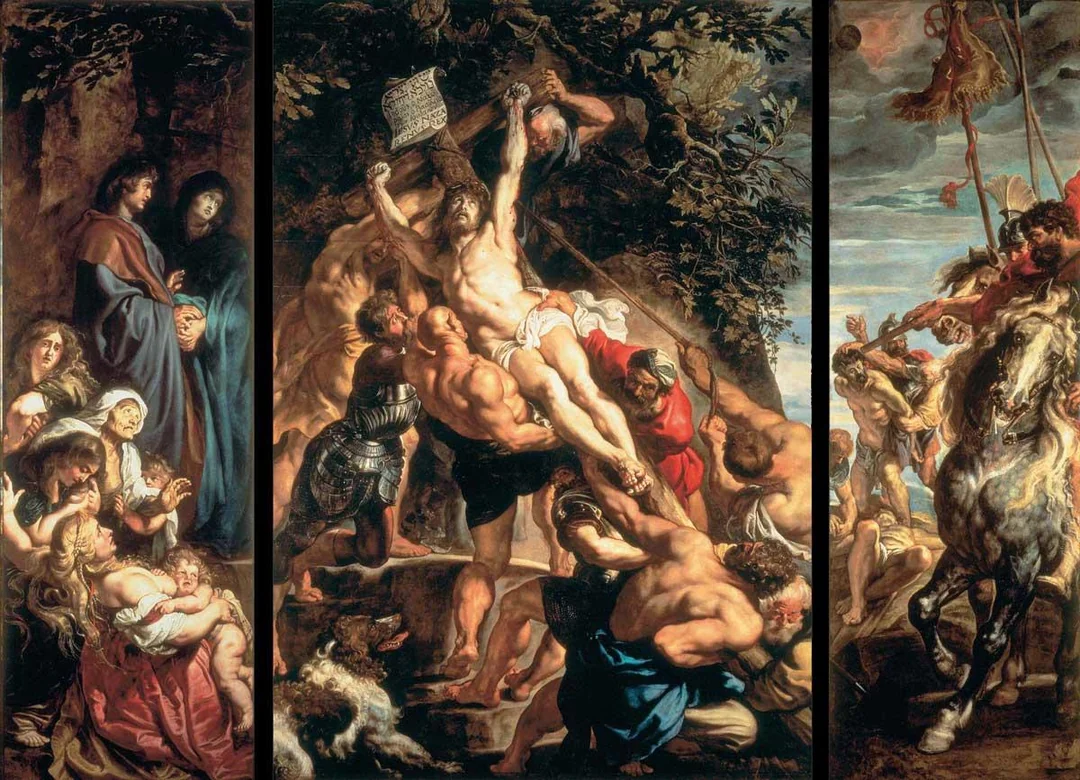
The Raising of the Cross altarpiece, 1610-1611
Peter Paul Rubens
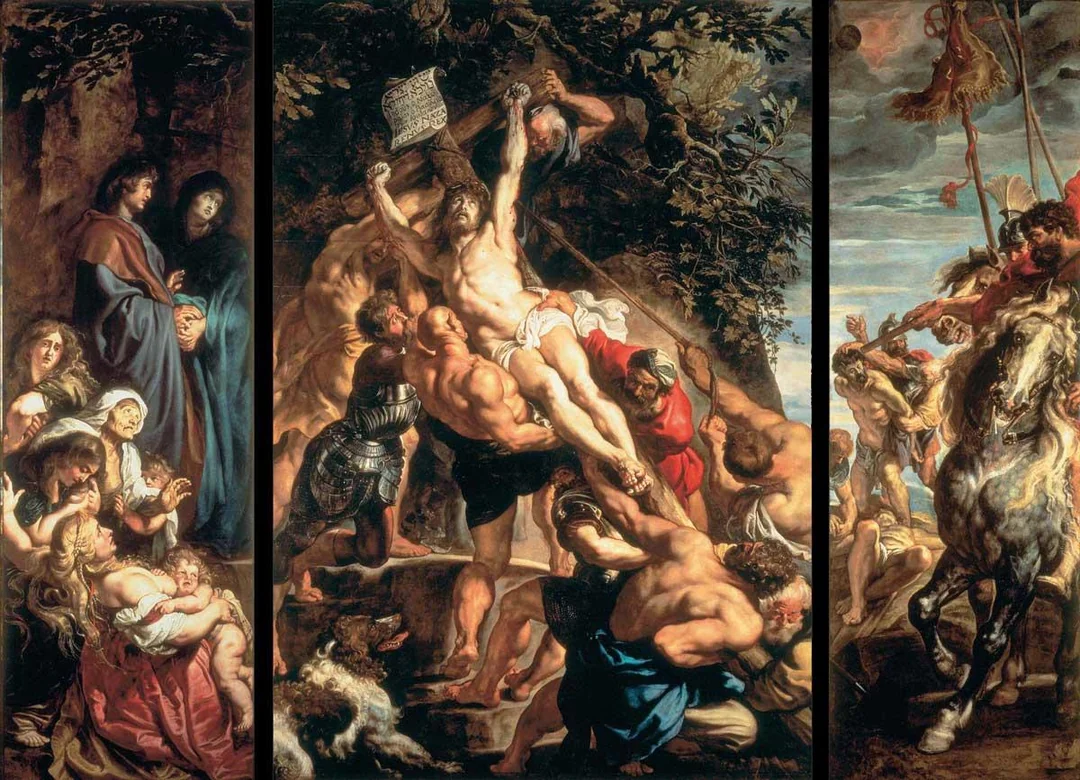
Peter Paul Rubens, The Raising of the Cross altarpiece, 1610-1611
Shows the moment when Jesus is being raised on the cross to be crucified. Muscular figures life the cross, creating a sense of power and movement. On the left are weeping woman who plea for forgiveness and on the right are Roman soldiers
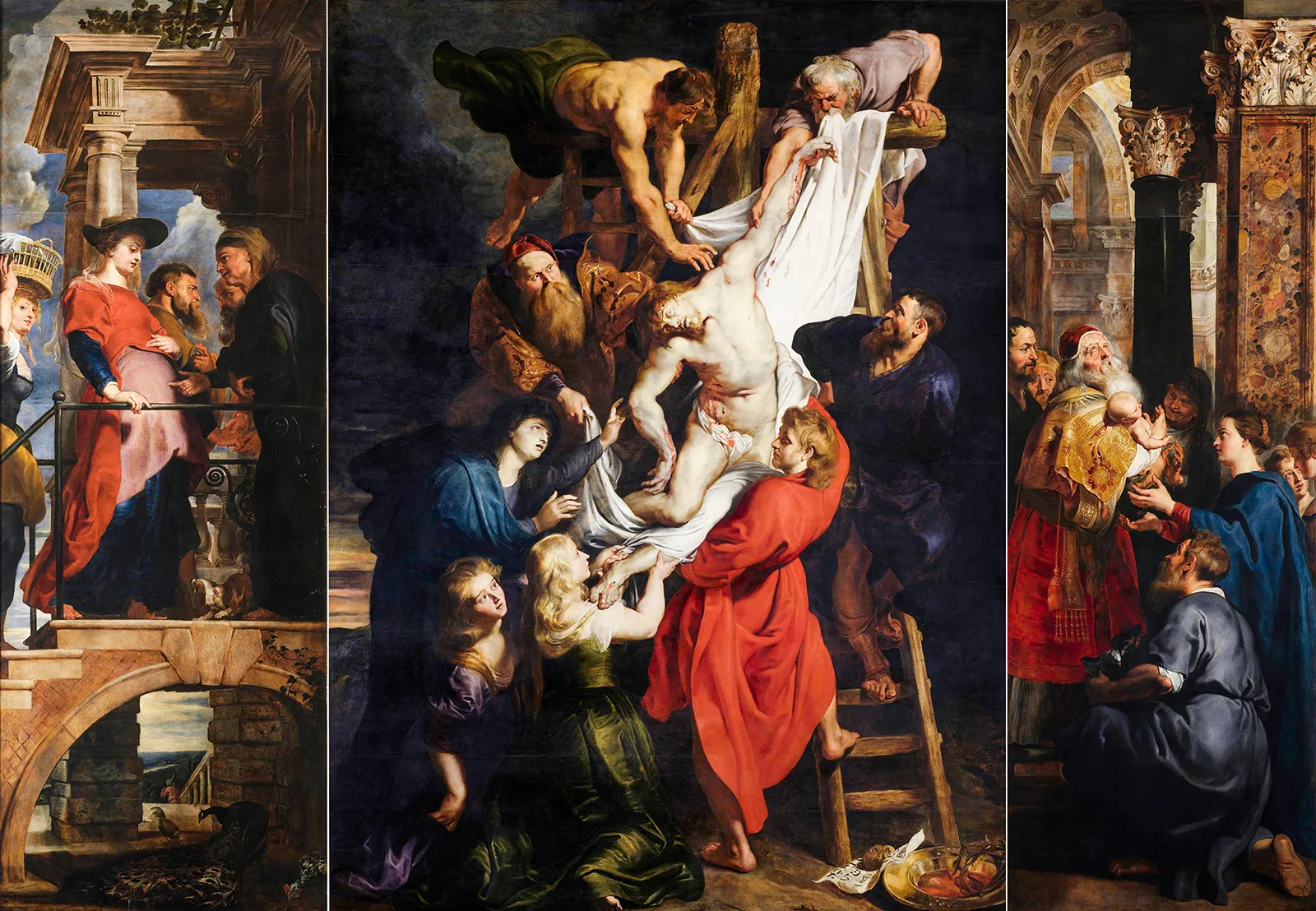
Descent from the Cross altarpiece, 1611-1614
Peter Paul Rubens

Peter Paul Rubens, Descent from the Cross altarpiece, 1611-1614
Shows the moment Jesus’ body is taken down from the cross. The join effort in gently lowering Jesus conveys sorrow and physical effort. On the left is the visitation scene of Mary being pregnant with Jesus visiting her cousin Elizabeth. On the right is the presentation scene were Mary carries baby Jesus. All the scenes show Jesus being held
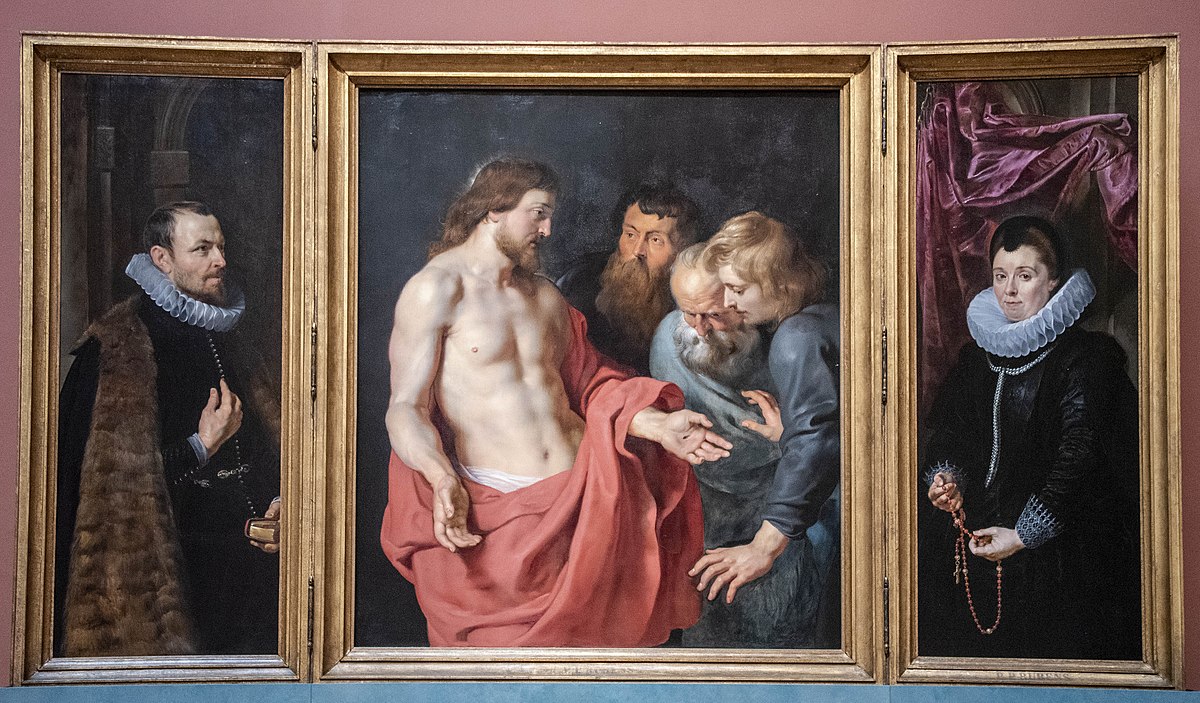
Triptych of Nicolaas Rockox, 1613-1615
Peter Paul Rubens

Peter Paul Rubens, Triptych of Nicolaas Rockox, 1613-1615
Rockox is on the left and his wife on the right, looking at the center scene. Jesus presents his living body as proof of resurrection instead of showing wounds. St. Thomas believes by looking, not touching
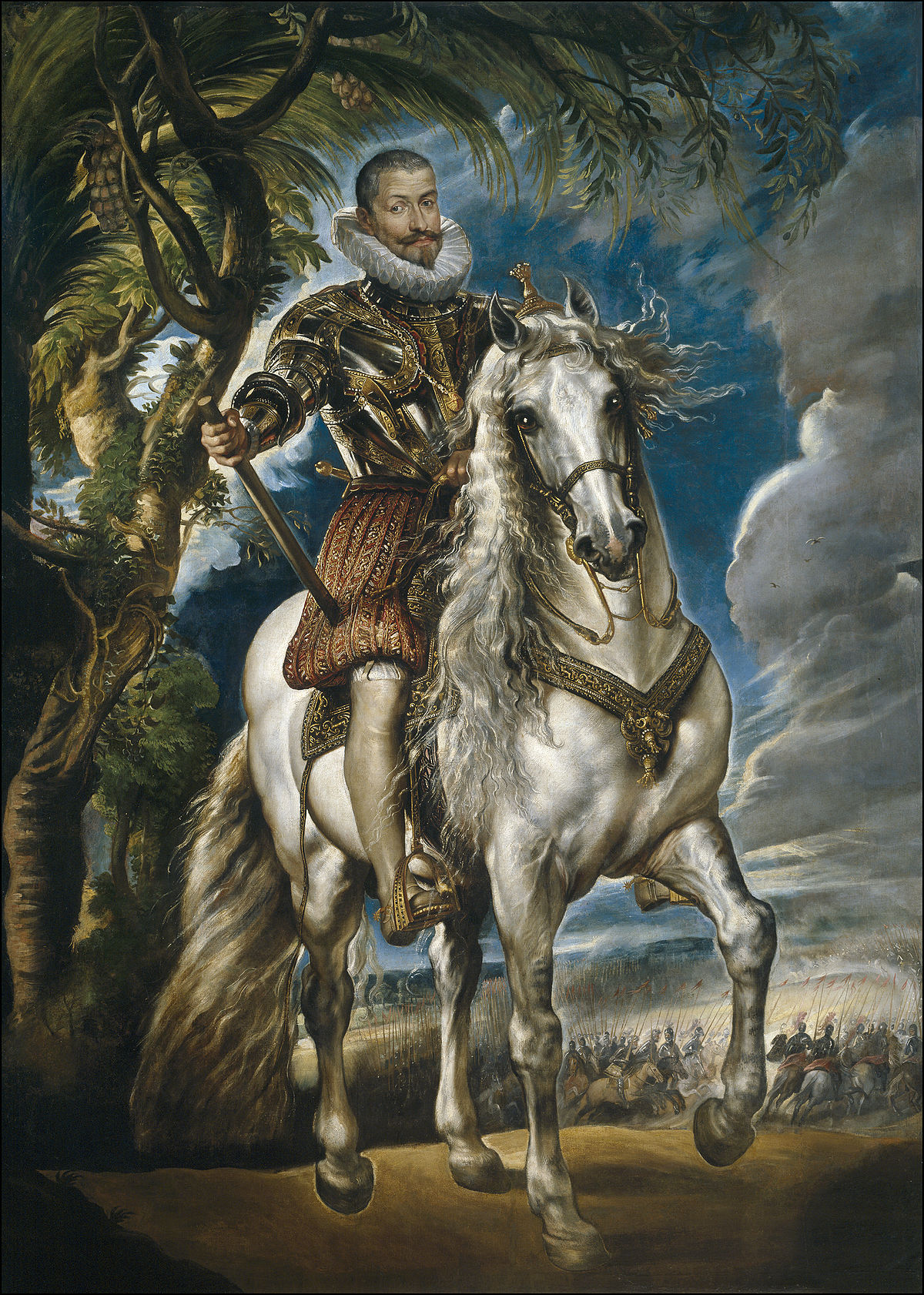
Duke of Lerma, Francisco Gomez de Sandoval y Rojas, 1603
Peter Paul Rubens
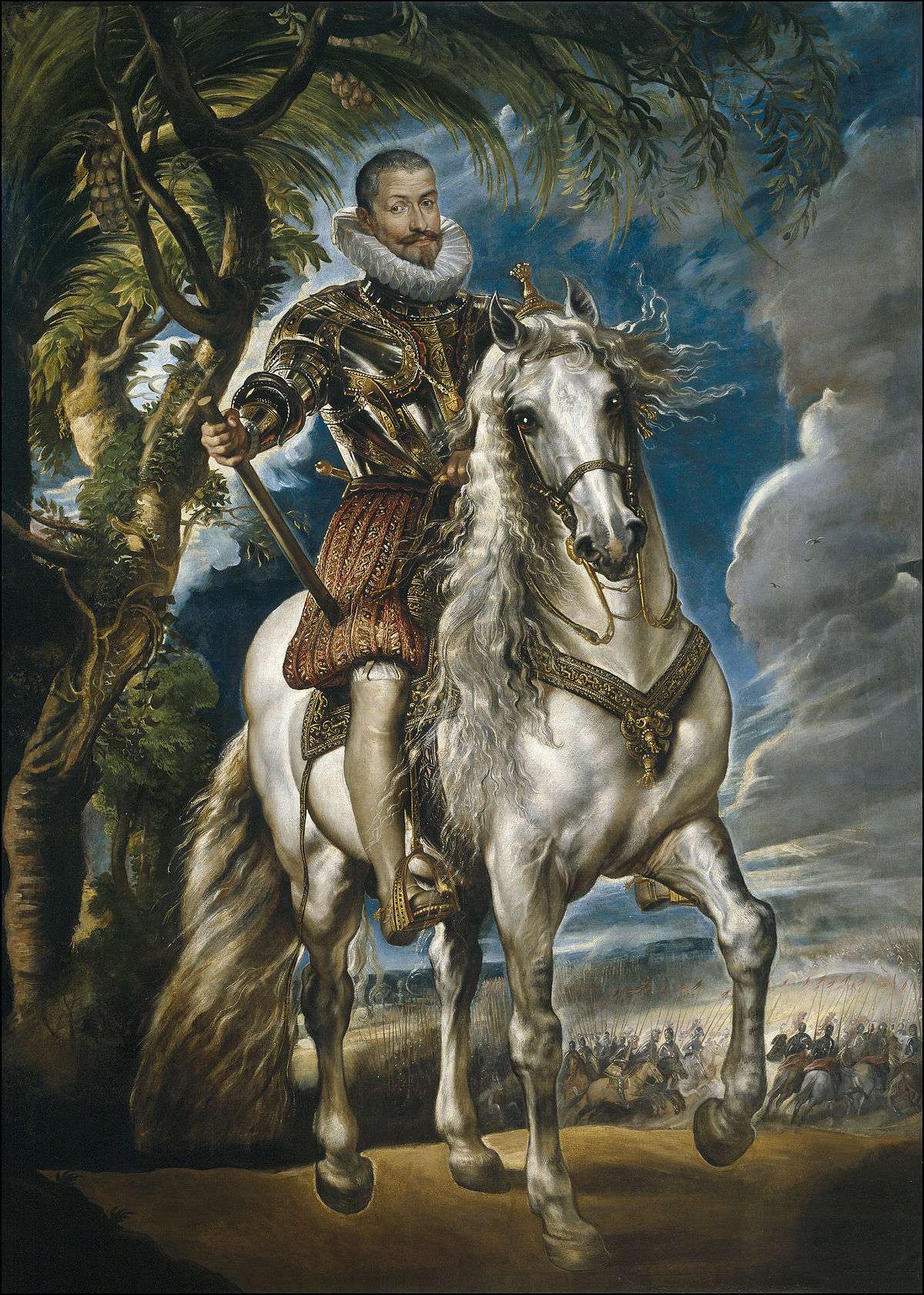
Peter Paul Rubens, Duke of Lerma, Francisco Gomez de Sandoval y Rojas, 1603
Shows the duke looking at the viewer instead of passing by. The pose is full of power and leadership while the background creates depth. There are soldiers in the bottom landscape. Shows loyalty to Spanish crown
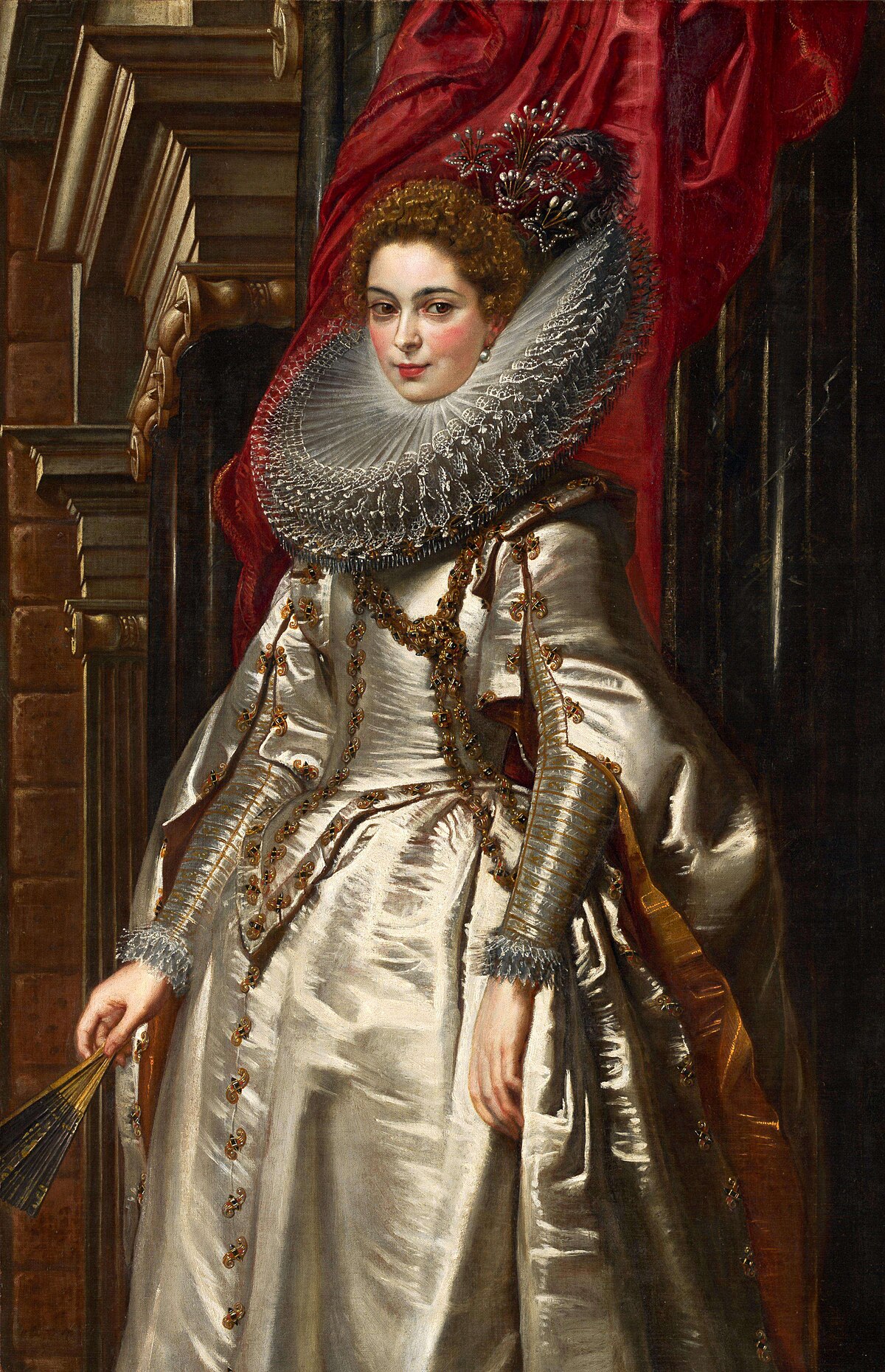
Marchesa Brigida Spinola-Doria, 1606
Peter Paul Rubens
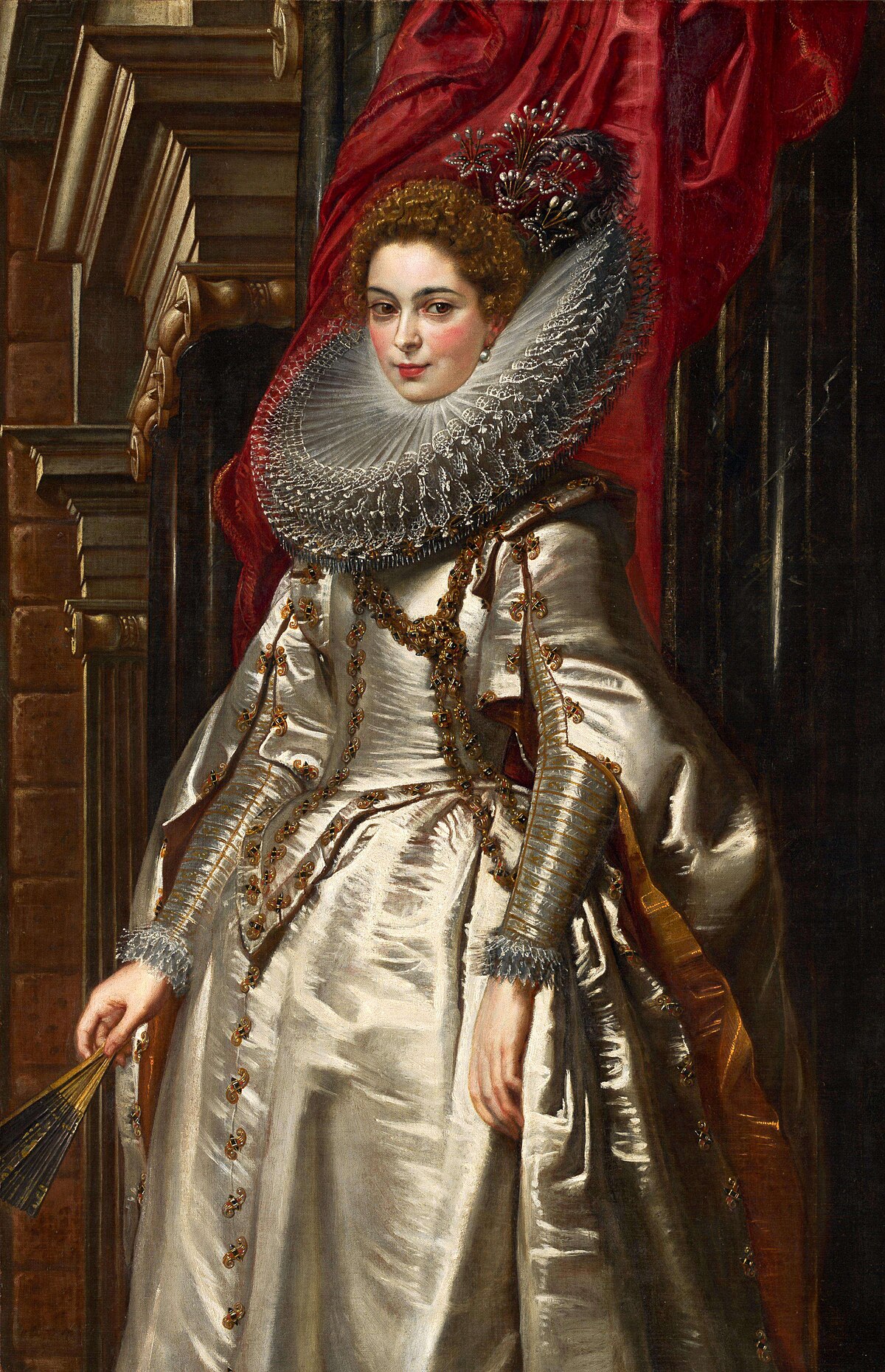
Peter Paul Rubens, Marchesa Brigida Spinola-Doria, 1606
Cut down portrait. Very visible brushstrokes on the clothing texture. The expression is in a half-smile, creating mystery. The drapery and clothes create movement in this static composition